time dilation
description: a difference in the elapsed time measured by two observers due to velocity or gravitational differences between them, as predicted by the theory of relativity.
68 results
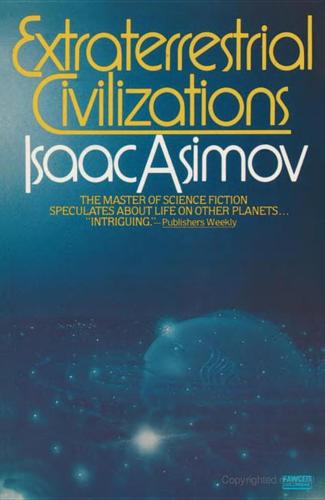
Extraterrestrial Civilizations
by
Isaac Asimov
Published 2 Jan 1979
Looked at in the light of the Universe as it appears to us today, there seems no reasonable hope that the speed-of-light limit will be defeated in any practical way. We must see what can be done at speeds below that of light. TIME DILATATION One peculiar phenomenon predicted by Einstein’s equations (and verified by studies of speeding subatomic particles) is that the rate at which time seems to progress slows with speed. This is called time dilatation. On a rapidly moving spaceship everything would go more slowly; atomic motions, clocks, the metabolism of human tissue. Because everything on a ship slows down with exact synchronism, people on board such a ship would not be subjectively aware of the change.
…
If we could watch them from Earth, we would see that it actually took a little over ten years for the ship to cover the distance, but to the time-slowed sense of the people on board, those ten years would seem only a week long. By making use of time dilatation, then, a space vessel would cover enormous distances in times that would seem comparatively short to the people on board. In a length of time that they would experience as 60 years, they would reach the Andromeda Galaxy, which is 2,300,000 light-years away from us.* Does time dilatation solve the problem? Perhaps not, for there are difficulties. First, to maintain a 1-g acceleration for an extended period of time (or a 1-g deceleration, for that matter) takes enormous quantities of energy, as I indicated earlier.
…
Some scientists suspect that this interference by interstellar matter will itself be sufficient to keep space vessels from ever reaching speeds of over 1/10 that of light—and at that speed the time- dilatation effect is very minor. Even if all difficulties are overcome, there remains another problem that lies at the very core of relativity. The slowed time sense affects only the astronauts, not the people back on the home planet. Making use of 1-g acceleration and deceleration, and time dilatation, to the full, a trip to the star Deneb and back will take astronauts 20 years (even allowing one year in the Deneb system for exploratory purposes).
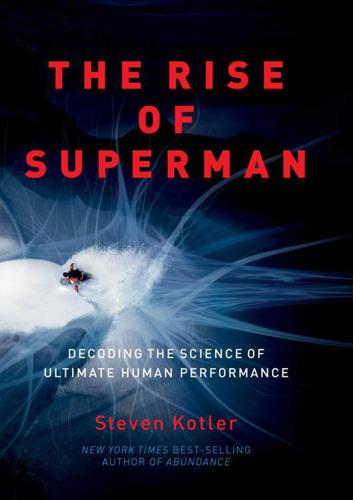
The Rise of Superman: Decoding the Science of Ultimate Human Performance
by
Steven Kotler
Published 4 Mar 2014
Since he didn’t want to go stumbling off another cliff, the first thing he needed to do was revive his senses. A few drops of vinegar on his tongue should do the trick, and on and on until, as he later recounted: “I heard a dull thud and my fall was over.” Heim survived the impact, but the mystery never left him. Panoramic vision? Time dilation? Heavenly music? None of this made any sense. He was a scientist by training, a geologist who would go on to do fundamental work on the structure of the Alps and become a member of the Oxford Royal Society, yet his experience seemed beyond the bounds of the rational. Not knowing what else to do, Heim conducted a survey of thirty-two others who had all survived near-fatal falls.
…
You are and it is and that’s why we continually seek it out, and always search for it, and need it. We need it to feel alive and to feel complete and to bring it all into perspective—it just makes everything else fall in line, fall in place. It makes everything else tolerable.” In his words, we hear plenty of familiar echoes. Just like Heim, Hamilton experienced time dilation. Just like Danny Way, he vanished into the moment. The same intrinsic motivation that fascinated Maslow shows up, as does Csikszentmihalyi’s meaning-of-life ramifications. So while flow might be different from both traditional and altered states of consciousness, the stability of these component parts allows us to zero in on the phenomena.
…
“I had time to hear the advice my friends were shouting down at me, to think about it, to turn my parachute, to hear more advice, to see the orange rope, to realize what it was, to grab for it, try to hang on, not be able to hold it, hear my friends shouting more instructions, try again. It was a lot to do and a long, complicated conversation. But it was all happening so slowly, I could process all that information and make the right decisions.” The technical name for Potter’s experience is “time dilation.” Normally, in the zone, after self-awareness starts to fade, temporal awareness tends to follow. In Flow, Csikszentmihalyi explains further: “One of the most common descriptions of optimal experience is that time no longer seems to pass the way it ordinarily does. The objective, external duration we measure with reference to outside events like night and day, or the orderly progression of clocks, is rendered irrelevant by the rhythms dictated by the activity.… [I]n general, most people report that time seems to pass much faster.
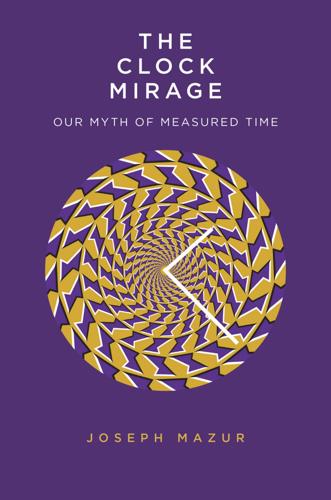
The Clock Mirage: Our Myth of Measured Time
by
Joseph Mazur
Published 20 Apr 2020
If lengths of telomeres are statistically suggestive of marginal measures of age, Scott was actually getting younger the more he stayed in space! This time dilation seems to defy common sense. While in constant relative motion, each twin appears younger to the other. But Scott ends up younger because the symmetry is broken when he accelerates to change reference frames for the return journey. But in physics the phenomenon is not at all a paradox. Each twin sees the other’s time dilate, so each appears younger to the other. It is hard to fathom that time is not absolute—not simply because the physicists have made a definition linking space and time through speed and/or gravitation but more because it seems to imply a profound contradiction to what we understand as the biological aging process.
…
The external world may be made from material known only by our senses giving the illusion of color, smell, feeling, and motion.” My guess is that he would maintain that time is also an illusion. The twentieth century brought us relativity and quantum mechanics. Space and time were no longer thought of as separate aspects of reality; they were united into a single four-dimensional continuum. Time dilation, inconstancy of mass, and special relativity suggest that motion is indeed illusory. Quantum theory suggests that some motion is not continuous and therefore that time is not continuous. Electrons are strictly confined to moving between discrete energy levels around an atom’s nucleus. It’s hard to imagine them discretely jumping around, for it disrespects our sense of continuous time.
…
He believed that, somehow, we can measure that mathematical time through observations of motion, as if the mysterious driver could never be known but its consequences could be measured. We still use the word time in the singular when thinking about Newton’s baffling mover, even though we now know that it is not absolute and that its measurement submits to the phenomenon of time dilations that depend on relative speeds. We know that the world turns in a measure of time and that all events and motions of the universe are orchestrated by time. Anything that changes does so by definition of time and, in particular, by a measurable duration. Duration is tricky though. For Newton, it had one advantageous property: independence from the observer.
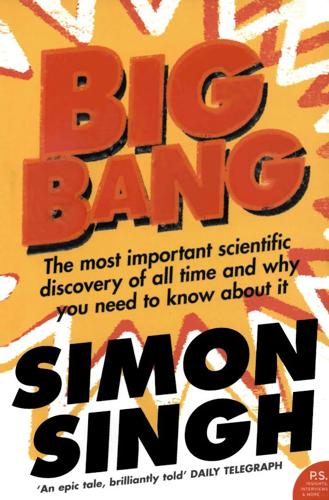
Big Bang
by
Simon Singh
Published 1 Jan 2004
Einstein’s mathematical formula described exactly how any observer would genuinely perceive time to slow down when looking at a moving clock, a phenomenon known as time dilation. This seems so utterly perverse that it raises four immediate questions: 1. Why don’t we ever notice this peculiar effect? The extent of the time dilation depends on the speed of the clock or object in question compared with the speed of light. In the above example the time dilation is significant because Alice’s carriage is travelling at 80% of the speed of light, which is 240,000,000 m/s. However, if the carriage were travelling at a more reasonable speed of 100 m/s (360km/h), then Bob’s perception of Alice’s clock would be almost the same as her own.
…
Everything would be similarly affected by the same degree of time dilation. 4. Why can’t Alice use the slowing of her clock and her own movements to prove that she is moving? All the peculiar effects described above are as observed by Bob from outside the moving train. As far as Alice is concerned, everything inside the train is perfectly normal, because neither her clock nor anything else in her carriage is moving relative to herself. Zero relative motion means zero time dilation. We should not be surprised that there is no time dilation, because if Alice noticed any change in her immediate surroundings as a result of her carriage’s motion, it would contravene Galileo’s principle of relativity.
…
Plugging the appropriate numbers into Einstein’s equation would show that the difference in their perception of time would be just one part in a trillion. In other words, it is impossible for humans to detect the everyday effects of time dilation. 2. Is this difference in time real? Yes, it is very real. There are numerous pieces of sophisticated hi-tech gadgetry that have to take into account time dilation in order to work properly. The Global Positioning System (GPS), which relies on satellites to pinpoint locations for devices such as car navigation systems, can function accurately only because it takes into account the effects of special relativity.
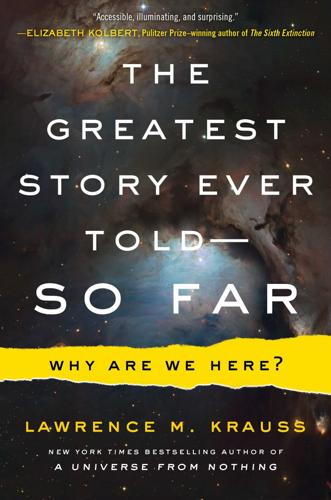
The Greatest Story Ever Told--So Far
by
Lawrence M. Krauss
Published 21 Mar 2017
To make matters worse, it would take more fuel than there is mass in the galaxy to power a single such voyage, at least using conventional rockets of the type now in use. Nevertheless, science fiction woes aside, “time dilation”—as the relativistic slowing of clocks is called with regard to moving objects—is very much real, and very much experienced every day here on Earth. At high-energy particle accelerators such as the Large Hadron Collider, for example, we regularly accelerate elementary particles to speeds of 99.9999 percent of the speed of light and rely on the effects of relativity when exploring what happens. But even closer to home, relativistic time dilation has an impact. We on Earth are all bombarded every day by cosmic rays from space.
…
These particles are produced where high-energy protons in cosmic rays smash into the atmosphere, producing a shower of other, lighter particles—including muons—which are unstable, with a lifetime of about one-millionth of a second, and decay into electrons (and my favorite particles, neutrinos). If it weren’t for time dilation, we would never detect these muon cosmic rays on Earth. Because a muon traveling at close to the speed of light for a millionth of a second would cover about three hundred meters before decaying. But the muons raining down on Earth make it twenty kilometers, or about twelve and a half miles or so, from the upper atmosphere, in which they are produced, down to our Geiger counter.
…
See Plato’s cave allegory Chadwick, James, 117–19, 121, 123, 128 Chandrasekhar, Subrahmanyan (“Chandra”), 153 Chew, Geoffrey, 192, 235 Chopra, Deepak, 86, 99 Clay Mathematics Institute, 244 Cline, David, 251 CMS detector, CERN, 263–64, 267–68, 272 CNO cycle, 136 coincidence methods, 116 Coleman, Sidney, 220, 238, 239 color photograph, Maxwell’s work on, 33, 35 Columbus, Christopher, 52 Condon, Edward, 169 Cooper, Leon, 184, 185 Cooper pairs, 185–86, 187–88, 197–98, 199 Cornell, Eric, 186 cosmic microwave background (CMB) radiation, 290, 292–93 cosmological constant, 295–96 Coulomb, Charles de, 30 creativity, 51–52 Curie, Marie, 117, 119 D Darwin, Charles, 5, 20, 21 Davis, Ray, 280–81 Davy, Humphry, 25, 26 Dawkins, Richard, 22 Dent, James, 297 Descartes, René, 22 Dick, Philip K., 12 dimensional analysis, 36 Dirac, Paul Adrien Maurice, 85, 91–95 antiparticle discovery by, 95, 97, 114, 115 combination of quantum mechanics and relativity by, 92, 95, 151 Einstein on, 91 electron equation of, 92–94, 99, 114 Feynman compared with, 97–98 Feynman’s first meeting with, 92 Feynman’s research based on, 99 mathematical prediction of new particle by, 93–94, 143 personality of, 91–92, 98 quantum theory of radiation and, 98, 99 Dirac equation, 92–94 displacement current, 37 double-slit experiment with light, 74–76, 77, 88 Dyson, Freeman, 85, 106, 235 E Eddington, Sir Arthur Stanley, 135 Eightfold Way (Gell-Mann), 193–94 Einstein, Albert, 4, 42, 49–68 background of, 46 Bose-Einstein condensation research by, 185–86 clocks relative to moving objects (time dilation) research of, 58–61 creativity and intellectual confidence of, 52 Dirac described by, 91 Galileo-Maxwell paradox resolution by, 49–54, 58, 64–65 General Theory of Relativity of, 10, 42, 68, 85, 110, 126, 295 gravity and, 114 inferences about real world using measurements and, 61–65 letter to President Roosevelt from, 129 Minkowski’s four-dimensional “space-time” theory and, 66–68, 71 Planck’s relationship with, 80–81 relativity discovery of, 95 ruler measurement example of relativity and, 65–67 space and time theory of, 55–58, 66, 68 Special Theory of Relativity of, 68, 80 electric charges Faraday’s research on, 25–30, 37–38, 68, 195 quantum electrodynamics (QED) and symmetry of, 106, 107 electric fields, Farady’s visualization of action of, 27–30, 193–94 electricity, Maxwell’s theory of magnetism and, 36–39, 48, 94, 218, 219 electromagnetic waves calculation of speed of, 42, 50–51 Faraday cage shield against, 195 Maxwell on light as, 42, 219 Maxwell’s discovery of, 41, 42, 46, 74 as particles, 81, 82 superconductors and different polarizations of, 199–200 electromagnetism gauge symmetry in quantum theory of, 111 Maxwell’s research on, 39–43, 46, 50–51, 68, 74, 109 electrons Dirac’s equation describing, 92–94 electric charge configurations of, 93–94 Feynman’s measurement of trajectories of, 100–102 mathematical expression of wave function of, 77 spin angular momentum of, 127, 164 spin configurations of, 93 Young’s double-slit experiment with beams of, 75–77 electroweak symmetry, 254, 277, 282, 283–84, 285, 287, 290, 294, 296–97 electroweak theory, 229, 278 publications questioning, 227 validation of, 228, 259 electroweak unification, 216–17, 218, 222, 231, 250, 259, 278 Englert, François, 206–7, 211, 271 European Organization for Nuclear Research (CERN), 225, 236 as dominant particle physics laboratory, 259, 262 Gargamelle detector at, 223–24, 225 Large Electron-Positron (LEP) Collider at, 262–63 Large Hadron Collider (LHC) at, 61, 263–74, 275, 284, 285, 286–87, 299 proton accelerator at, 222–23, 251 Super Proton Synchrotron (SPS) at, 251–52, 260, 262 evolution, 3, 5, 20 exclusion principle (Pauli), 123, 127 F Faraday, Michael, 24–30, 38 background of, 24–25 impact of discoveries of, 30, 31, 46, 68, 109 magnetic induction discovery of, 26–27, 30, 36 Maxwell’s meetings with, 36 Maxwell’s research and, 37, 38 research on electric charges and magnets by, 25–30, 37–38, 68, 195 visualization of action of fields by, 27–30, 193–94 Faraday cage, 195 Feenberg, Eugene, 169 Fermat, Pierre de, 98–99 Fermi, Enrico, 125–32 artificial radioactivity and, 128 background of, 126–27 experimental approach to physics used by, 129–30, 142 impact of research of, 125–26 neutrino named by, 123, 127, 130 neutron decay theory of, 127–29, 130–32, 136, 142, 143, 145–46, 149 nuclear research in Manhattan Project and, 129 potential dangers in releasing energy of atomic nucleus and, 129 statistical mechanics established by, 127 weak interaction theory of, 161, 162, 164 Yang’s work with, 153 Yukawa’s research and, 143, 144, 145–46 Fermi interaction, 136 Fermilab (Fermi National Accelerator Laboratory, Batavia, Illinois), 31, 251, 261, 262–63 fermions, 155, 185, 186, 233, 282, 283 Fermi Problems, 130 Feynman, Richard, 85, 97–106, 125, 159, 160, 228 antiparticles and, 100, 102 atomic bomb research of, 134 Bethe’s approach and, 134 Bjorken’s research on quarks and, 233 Block’s research on weak interaction and, 157–58 Dirac compared with, 97–98 Dirac’s first meeting with, 92 Dirac’s research used by, 99 electron trajectory measurement in time and, 100–102, 130 quantum electrodynamics (QED) and, 99, 102–6, 142, 175, 221, 235 research approach used by, 175, 245 on understanding quantum mechanics, 71 weak interaction research of, 159, 163–64 Fizeau, Hippolyte, 42 Fourier analysis, 126 Franklin, Benjamin, 170–71 Friedman, Jerry, 160, 232–33 G Galileo Galilei, 5, 21, 45–48 Catholic Church’s trial of, 45, 47 Einstein on Galileo-Maxwell paradox, 48–54, 58, 64–65 motion and rest state theory of, 45–48, 49, 70, 97, 168, 245 gamma rays, 116 neutron mass measurement using, 119 Rutherford’s discovery of, 119–20 Gargamelle detector, CERN, 223–24, 225 Garwin, Dick, 160 gauge bosons, 214, 217, 233, 254, 277, 278 gauge invariance, 109, 172, 198, 199, 228 gauge symmetry chessboard analogy to explain conservation of energy in, 108–9 description of, 108 differences in philosophical viewpoints on, 109–10 quantum electrodynamics and, 111–12 understanding nature of reality using, 110 Weyl’s naming of, 110–11 gauge transformation, 109 Geiger, Hans, 116, 118 Gell-Mann, Murray Glashow’s work with, 178 quarks and, 163, 193–94, 231–32, 233–34, 236, 240 scale equations of, 237 symmetry scheme of, 193, 214 weak interaction research of, 163–64 Yang-Mills theory and, 240–41 General Theory of Relativity (Einstein), 10, 42, 68, 85, 110, 126, 295 Genesis, 19, 43 Georgi, Howard, 276–77, 278, 279 Gilbert, Walter, 204–5 Gladstone, William, 26 Glashow, Sheldon, 177–79 approach to research used by, 178 background of, 177–78, 212 CERN research and, 252 electroweak unification and, 216–17, 218, 222, 278 Grand Unification and, 277, 279 on Higgs’s research, 207, 254, 276 Krauss’s career and, 213, 214 neutral currents and, 222, 225, 234 quarks and, 234, 241 Scottish Universities Summer School courses from, 203–4 weak interaction research of, 178–79, 207, 219, 223, 225, 276–77 Weinberg’s research and, 212–13, 218 Gold, Tommy, 113, 121 Goldstone, Jeffrey, 188, 203, 204, 206, 214 Goldstone bosons, 206, 214–15, 217 Grand Unified Theory (GUT), 277–79, 282–83, 290, 291, 292–93, 294 gravity dimensional analysis of, 36 Einstein’s research on, 114 Newton’s research on, 5, 27–28, 38, 48 quantum theory of, 110 Greenberg, Oscar, 233, 240 Gross, David, 235–41, 277 asymptotic freedom discovery of, 238–41, 245 background of, 235 Gell-Mann’s influence on, 236 quantum chromodynamics and, 241 research on quarks by, 236–37 scaling research of, 237–39 Yang-Mills theory and, 239, 240–41 group theory, 276 Guralnik, Gerald, 207 Gürsey, Feza, 123 Guth, Alan, 290, 291–92 H Hagen, C.
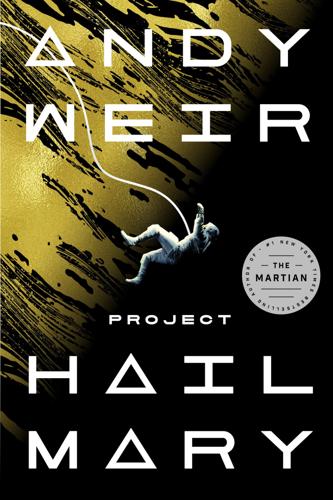
Project Hail Mary
by
Andy Weir
Published 15 May 2021
Lamai decided was the maximum sustained g-force a human should be exposed to for almost four years. Earth experienced something like thirteen years during that time, but time dilation worked in our favor for the crew. If I do the long trip home with just 1.33 million kilograms of fuel (which is all my remaining tanks can hold), the most efficient course is a constant acceleration of 0.9 g’s. I’d be going slower, which means less time dilation, which means I experience more time. All told, I’ll experience five and a half years on that trip. So what? It’s only an extra year and a half. What’s the big deal?
…
Over three years. Well, it takes light twelve years to make this trip, so it should take me a long time too. Oh, right. Relativity. I have no idea how much time it took. Or, rather, I have no idea how much time I experienced. When you get going near the speed of light, you experience time dilation. More time will have gone by on Earth than I have experienced since I left Earth. Relativity is weird. Time is of the essence here. And unfortunately, while I slept, Earth experienced at least thirteen years. And even if I find a solution to the Astrophage problem right now, it would take at least thirteen years for that information to get back to Earth.
…
“Science Eridians design ship and fuel requirements. Journey to take 6.64 years.” That trips me up for a moment. 40 Eridani is ten light-years away from Tau Ceti, so you can’t get from one to the other in less than ten years from Erid’s point of view. He must mean 6.64 years of time experienced by his ship thanks to time dilation. “Strange things happen on trip. Crew sick. Die.” His voice lowers. “Now I know was radiation.” I look down and give him a moment. “Everyone sick. I alone to run ship. More strange things happen. Engines not work right. I am engine expert. I cannot figure out problem.” “Your engines failed?”
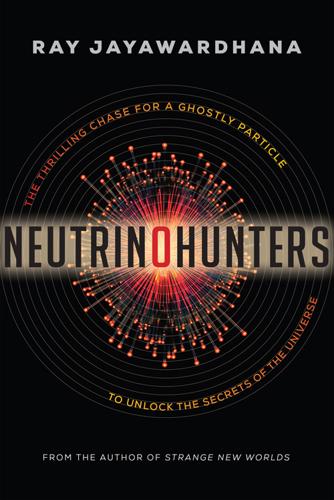
Neutrino Hunters: The Thrilling Chase for a Ghostly Particle to Unlock the Secrets of the Universe
by
Ray Jayawardhana
Published 10 Dec 2013
A TERRIBLE THING 27 special and general theories of relativity: There are many good popular books on relativity. For example, Russell Stannard, Relativity: A Very Short Introduction (New York: Oxford University Press, 2008) covers the basics well. 28 “time dilation”: Joseph Hafele and Richard Keating conducted one of the more famous experiments of relativistic time dilation in 1971 by flying four atomic clocks aboard commercial flights. They reported their findings in a pair of papers in Science: J. C. Hafele and R. E. Keating, “Around- the- World Atomic Clocks: Predicted Relativistic Time Gains” and “Around- the- World Atomic Clocks: Observed Relativistic Time Gains,” Science 177 (July 14, 1972): 166– 68 and 168– 70. 28 quantum mechanics: I remember reading In Search of Schrödinger’s Cat: Quantum Physics and Reality by John Gribbin (New York: Bantam Books, 1984) as a teenager.
…
The math works out to make it so, but it does lead to strange phenomena, such as time passing more slowly for those traveling very fast. If a future astronaut were to fly through space at 95 percent of light speed, she would age much less than her twin staying back on Earth. As peculiar as it may seem, scientists have verified that “time dilation” is real by flying atomic clocks around the world on airplanes and comparing them to identical clocks left on the ground. They have also confirmed the phenomenon many times over by measuring the change in the lifetime of subatomic particles traveling at different speeds. Ten years after he introduced the special theory, Einstein went on to present the general theory of relativity to describe gravity in a novel way.
…
Elements heavier than iron (e.g., gold) are produced only in supernovae. Supernova 1987A: The supernova in the Large Magellanic Cloud seen in the year 1987. Detectors on Earth also recorded neutrinos emitted during this supernova explosion. theory: A hypothesis that has withstood experimental and/or observational tests. time dilation: In the theory of relativity, the difference in elapsed time measured by two observers, either because one is traveling at a high speed relative to the other or because the two experience different gravitational potentials. tritium: A rare isotope of hydrogen whose nucleus contains two neutrons and a proton, instead of a lone proton, as is the case with ordinary hydrogen.
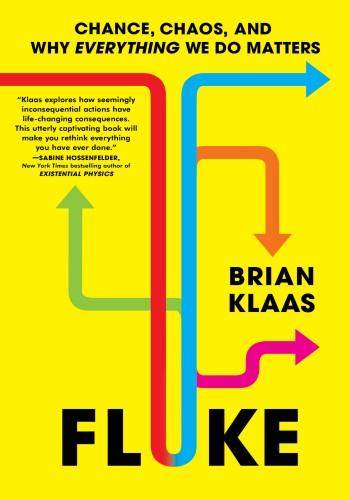
Fluke: Chance, Chaos, and Why Everything We Do Matters
by
Brian Klaas
Published 23 Jan 2024
why and how cancers develop: C. A. Ortmann et al., “Effect of Mutation Order on Myeloproliferative Neoplasms,” New England Journal of Medicine 372 (7) (2015): 601–12. “Time passes faster”: Carlo Rovelli, The Order of Time (New York: Penguin, 2019). time dilation: See, for example, A. R. Smith and M. Ahmadi, “Quantum Clocks Observe Classical and Quantum Time Dilation,” Nature Communications 11 (1) (2020): 5360. extremely precise clocks: C. W. Chou et al., “Optical Clocks and Relativity,” Science, 24 September 2010. head is older than your feet: Nicholas Jackson, “Study: Your Head Is Older Than Your Feet,” Atlantic, 24 September 2010. 304 days: See, for example, B.
…
“Time passes faster in the mountains than it does at sea level.” This isn’t a poetic statement about how we perceive ourselves in the pristine setting of nature, but an objective, verified truth. The gravity of a mass, such as the earth, warps time, making time move slower closer to the mass, an illustration of a phenomenon known as time dilation. Using precise atomic clocks, scientists have now been able to experimentally verify this effect, which was originally proposed by Albert Einstein. Even minuscule variations matter. In 2010, extremely precise clocks were placed at different heights, with one clock just over a foot above the other.
…
Over a human lifetime, if two people were born in the same moment, but one lived atop Mount Everest and the other lived at sea level, the mountain twin would be just a few thousandths of a second older after one hundred years. For the pragmatic purposes of our lives, it’s a curiosity, not a driver of change. But even though the differences from time dilation are tiny, invisible, and irrelevant to our daily lives, the implication is profound. There is no such thing as objective time. Time exists relationally, yet another instance of reality being intertwined, not separable. Time, itself, remains a mystery. Our experience of time can also be warped and altered by human decisions.
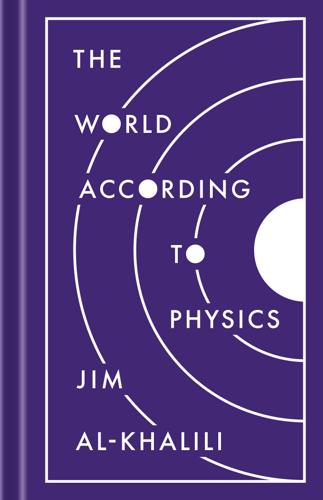
The World According to Physics
by
Jim Al-Khalili
Published 10 Mar 2020
Therefore, clocks at the Pole, where gravity is stronger, should be ticking ever so slightly slower than those at the equator (this is called general relativistic time dilation). However, the Earth is also spinning, and clocks at the equator are moving faster than clocks at the Pole (as measured by the adjudicating clock floating out in space) so equator clocks should tick more slowly than pole clocks (special relativistic time dilation). These two effects, due to special and general relativity, work against each other, so which one wins? Which clock is ticking more slowly? I calculated these two effects separately and found that a clock at the pole ticks, overall, more slowly because it feels stronger gravity, despite the clock on the equator moving faster.
…
See also general relativity; special relativity electricity, 84; magnetism linked to, 168–69 electromagnetic field, 78, 171 electromagnetic spectrum, 26 electromagnetism, 111, 112, 187; electroweak theory and, 173–74, 177; in fifth dimension, 182; gravity and, 169–70; parity conservation and, 44; quantum electrodynamics (QED) as explanation for, 173; between subatomic particles, 46, 50, 91–92; ‘superforce’ and, 167 electronics, 173, 246 electrons, 17, 96, 97, 194, 203, 217, 224; in cooling universe, 101–2; discovery of, 6; electromagnetic force and, 92, 93, 195; photoemission and, 29–31, 113, 171–72; positrons vs., 94, 104; protons vs., 95; quantisation of, 116–17; as qubits, 251–53; in Standard Model, 9; as waves vs. particles, 114–15, 117–18, 119, 137, 159, 180 electroweak force, 9, 174, 177, 231 emergent properties, 45–46, 165 Empedocles, 15–16 energy, 20, 21, 50; as capacity for work, 83; conservation of, 41, 85, 89–90, 167; dark, 7, 9, 193, 202–5, 210, 226, 276; distribution of, 142–43; as force, 84; of inflation field, 212–14; information linked to, 221; kinetic, 84, 89, 140, 151, 213; matter and, 82–107; types of, 84; useful vs. waste, 85–86, 146 engineering, 236, 239–40 entanglement, 123, 131–32, 222–23, 226, 244–45, 252, 253 entropy, 21, 143–47, 148–54, 163, 215, 243, 279 enzymes, 245 era of recombination, 101 ER = EPR theory, 222–23 eternal inflation, 216–18 ethology, 10 European Space Agency, 199 evolution, 270 excitation, 203, 228 exoplanets, 226 experimentation, 10–11, 14, 22, 24–25, 56, 226–27 Explorer 66 (Cosmic Background Explorer), 199n2 exponentiation, 209–10 false balance, 272–73 falsifiability, 270, 272 Faraday, Michael, 108, 242 fermions, 96, 104, 181 Feynman, Richard, 109 Feynman diagrams, 124 fifth dimension, 182–83 flatness problem, 206–8 force carrier particles, 92, 96–97, 104n4, 176, 187 four elements, 15–17 Franklin, Rosalind, 243 friction, 84, 140 Gaia, 1 galaxies, 49, 79, 98, 207–8; clusters of, 197; dwarf, 197; formation of, 150, 198, 217; mass of, 195; recession of, 201–2; rotational speed of, 193 Galileo Galilei, 26–27, 42, 62 gas clouds, 105–6, 147–49 gauge/gravity duality (anti–de Sitter/conformal theory correspondence; AdS/CFT), 232–33 Geiger, Hans, 90 Gell-Mann, Murray, 13 general relativity, 20, 53, 71–78, 169, 182, 203; curved spacetime and, 234; doubts and confirmations of, 267–68, 269–70; gravitation and pressure in, 212; gravitation and time in, 8, 36–39, 163, 260; loop quantum gravity linked to, 185–86, 233; quantum mechanics and, xiii, 40, 165; special relativity vs., 73–74; time dilation in, 261 Genesis, Book of, 1 genetics, 243 geocentrism, 126 geoids, 263 geology, 10, 241, 248 geometry, 25 germ theory, 270 GIMPs (gravitationally interacting massive particles), 200 globular star clusters, 197 gluons, 92–93, 97, 103, 176, 191 gold, 106 Google, 253, 256 GPS (global positioning system), 38–39, 72, 240–41, 259 grand unified theory (GUT), 177 graphene, 247 gravitational field, 84, 248; curved spacetime linked to, 72–73, 163, 170; quantisation of, 180, 186–87; spacetime equated with, 76–78, 163, 169, 186; time and, 36–38, 72–74 gravitational waves, 225–26 graviton, 187 gravity, 8, 9, 84, 174, 275; on cosmic scale, 49–50, 92; electromagnetism and, 169–70; force vs. potential of, 37–38; within galaxies, 79; gas cloud formation and, 105–6, 147–49; loop quantum, xiii, 185–91, 238, 291; lumpy quanta of, 186–87; parity conservation and, 44; quantum, 40, 42, 132, 165, 178–80, 221, 233, 235, 238, 258, 276; spacetime linked to, 72–73, 74, 76–78; star and galaxy formation and, 150; ‘superforce’ and, 167; tides and, 151; universality of, 35–39, 168; weakness of, 229 Gravity and Me (television documentary), 259 Grover’s search algorithm, 254 Hartle, James, 216 Hawking, Stephen, 5, 24, 206, 214, 220, 226 Hawking radiation, 24, 220 al-Haytham, Ibn, 27, 55–56 heat, 21, 140, 151.
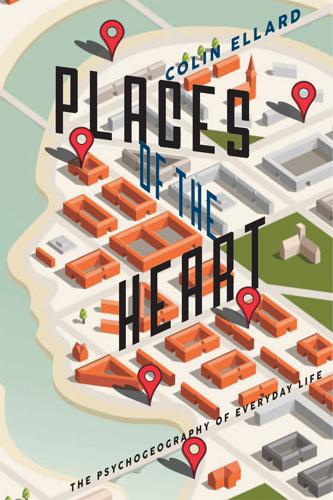
Places of the Heart: The Psychogeography of Everyday Life
by
Colin Ellard
Published 14 May 2015
Based on previous observations that awe experiences can affect our perception of time and produce a feeling of living-in-the-moment, Rudd designed a series of survey questions focusing on the subjective experience of time. Rudd showed convincingly that the experience of awe induces a kind of subjective time dilation. We feel as though there is more time to get things done, that the subjective instant is slowed. As a follow-up consequence of this perhaps, those who experienced awe were also more willing to engage in certain prosocial behaviors that, in her experiment, were contextualized in the form of expressions of willingness to donate money to worthy causes.16 Although these findings do not fit easily into the framework I described earlier in which awe is said to produce an effort to accommodate, to bring into alignment mutually contradictory ideas about one’s existence, it is possible to see a connection between Rudd’s findings of time dilation and my earlier description of such phenomena as the Overview Effect in which we feel a sense of expanding space and a dissolution of the divide between ourselves and the rest of the universe.
…
As a follow-up consequence of this perhaps, those who experienced awe were also more willing to engage in certain prosocial behaviors that, in her experiment, were contextualized in the form of expressions of willingness to donate money to worthy causes.16 Although these findings do not fit easily into the framework I described earlier in which awe is said to produce an effort to accommodate, to bring into alignment mutually contradictory ideas about one’s existence, it is possible to see a connection between Rudd’s findings of time dilation and my earlier description of such phenomena as the Overview Effect in which we feel a sense of expanding space and a dissolution of the divide between ourselves and the rest of the universe. Just as the spatial divides of the universe might break down during the experience of awe, so one might expect to see shifts in the temporal horizons of our lives.
…
See body, awareness; self-consciousness awe accommodation and, 154–55, 165 animal behavior and, 156–57, 158–59 architecture inspiring, 155–56, 167–68, 171, 173 in childhood, 11–12, 151 elements of, 152–55 mortality coping by, 164–67 neuroscience of, 172–73 Overview Effect and, 152, 166 religious activity and, 154–55, 163, 165, 166–67 social engagement and, 166 social status and, 156–58, 167–68 of space exploration, 151–52 supernatural agents and, 154, 166–67, 172–73 time dilation and, 166 transcendence and, 152–53, 155, 172–73 upward gaze and, 171–73 vastness and, 154, 155, 156, 158, 171–73 Bachelard, Gaston, 66 Bailenson, Jeremy, 177 Barton, Kevin, 180 basal ganglia, 200 Basic Writings (Heidegger, Martin), 79 Beall, Andy, 174 Becker, Ernest, 162 bedrooms, 61 Beesley, Philip, 53–56, 57, 59, 74 Being and Time (Heidegger, Martin), 79 Bell Telephone Company, 111 Benjamin, Walter, 78, 193 Berlin, 23–24, 56 Berlyne, David, 111–13 birds, 31–32, 158–59 BlackBerry, 197 Blanke, Olaf, 170, 191 Blascovitch, Jim, 176–77, 179 BMW-Guggenheim Laboratory, 72 body.
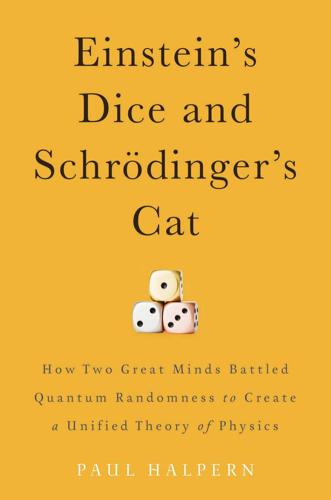
Einstein's Dice and Schrödinger's Cat: How Two Great Minds Battled Quantum Randomness to Create a Unified Theory of Physics
by
Paul Halpern
Published 13 Apr 2015
He decided to discard the concepts of absolute time and space (the latter so disliked by Mach) and replace them with more malleable notions. If, he reasoned, moving observers saw clocks ticking slower and yardsticks shrinking in the direction of motion, 36 The Clockwork Universe light’s speed could maintain the same value. These two ideas—time dilation and length contraction—brought together Maxwell’s theory with an amended theory of motion, banishing one of Kelvin’s clouds and bringing on a sunny future. Time dilation involves a discrepancy between the “proper time” of an observer moving along with something under study and the relative time of a second observer traveling at a different constant speed compared to the first.
…
So, if an actress dressed in a certain style during the 2016 Oscars ceremony and a Proxima Centaurian four light-years away adopted the same style in 2017, she couldn’t be accused of being a copycat, as the interval between them would be spacelike, with no possibility of 39 Einstein’s Dice and Schrödinger’s Cat causal communication. A signal would have taken a minimum of four years, not one year. The Centaurian fashion statement would merely be cosmic coincidence. By framing the special theory of relativity as a four-dimensional theory set in spacetime, Minkowski showed how time dilation and length contraction could be construed as rotations that transform space into time. To see how such rotations occur, we can think of the spacetime interval as something like a weather vane, with north representing time and east representing space. Switching between two different perspectives is like a turning of the vane from east-northeast to north-northeast—taking away some of its easterly component and replacing it with a more northerly component.
…
Einstein (Barnett), 204 The Universe Next Door (Wilson), 218 University of Berlin, 7, 56, 109–110 University of Bern, 40 University of Ghent, 155, 157 University of Göttingen, 69–70, 71, 72, 82, 84–88, 116, 128–129, 130, 180 University of Graz, 5, 144, 145, 153 University of Königsberg, 29 University of Prague, 54 University of São Paulo, 209 University of Vienna, 24–26, 45, 144, 214–215, 219 University of Zurich, 34, 40, 54, 91–92 Up quarks, 227 Talmey, Max, 22, 33 Tau neutrinos, 227 Tauons, 227 Tears for Fears, 218–219 Teleparallelism, 112–114 Tensors, 54 Einstein, 59, 60–61, 62, 72, 172 metric, 61, 62, 172, 187, 188 Ricci, 172, 173, 191 Riemann curvature, 61 stress-energy, 59, 60, 62 Tetrad, 112–113 Thermal physics, 23 Thermodynamics, 22–24 The Third Policeman (O’Nolan), 165 Thirring, Hans, 25, 51, 64, 144, 151, 152, 217, 228 Thirring, Walter, 5, 219–220 Thomson, J. J., 28, 67, 129 Thomson, William (Lord Kelvin), 31 The Threepenny Opera (Brecht & Weill), 109 Time dilation, 37, 40 Time magazine, 174, 195, 196 Times (newspaper), 68, 114 Tomonaga, Sin-Itiro, 199 Top quarks, 227 Torsion balance, 53 Total angular momentum, 82 Tuam Herald (newspaper), 196 Turner, Michael, 65 U(1), 210 Uhlenbeck, George, 95, 179 Ultraviolet catastrophe, 32 Unamuno, Miguel de, 164 Uncertainty principle, 89, 137, 139, 143, 147 Unified field theory criticism of, 208 Einstein and, 1, 6–7, 49, 68, 74, 112–116, 146–147, van Nieuwenhuizen, Peter, 231 Vedantic beliefs, Schrödinger and, 76, 77–78, 80, 120, 217–218 Veltman, Martinus, 211 Vienna conference of 1913, 44–51 von Eötvös, Loránd, 53 270 Index 214 Wheeler, John, 198, 199 Whittaker, E.

From eternity to here: the quest for the ultimate theory of time
by
Sean M. Carroll
Published 15 Jan 2010
The answer, according to special relativity, is that it’s not the speed of light that depends on your reference frame—it’s your notion of a “kilometer” and a “second.” If a meterstick passes by us at high velocity, it undergoes “length contraction”—it appears shorter than the meterstick that is sitting at rest in our reference frame. Likewise, if a clock moves by us at high velocity, it undergoes “time dilation”—it appears to be ticking more slowly than the clock that is sitting at rest. Together, these phenomena precisely compensate for any relative motion, so that everyone measures exactly the same speed of light.63 The invariance of the speed of light carries with it an important corollary: Nothing can move faster than light.
…
No matter what they do, how hard they accelerate or for how long, the light is always moving faster, and always moving faster by the same amount.64 (From their point of view, that is. From the perspective of an external observer, they appear to be moving closer and closer to the speed of light, but they never reach it.) However, while length contraction and time dilation are perfectly legitimate ways to think about special relativity, they can also get pretty confusing. When we think about the “length” of some physical object, we need to measure the distance between one end of it and the other, but implicitly we need to do so at the same time. (You can’t make yourself taller by putting a mark on the wall by your feet, climbing a ladder, putting another mark by your head, and proclaiming the distance between the marks to be your height.)
…
That, for example, is the basic mechanism behind the Global Positioning System (GPS) that helps modern cars give driving directions in real time. Your personal GPS receiver gets signals from a number of satellites orbiting the Earth, and determines its position by comparing the time between the different signals. That calculation would quickly go astray if the gravitational time dilation due to general relativity were not taken into account; the GPS satellites experience about 38 more microseconds per day in orbit than they would on the ground. Rather than teaching your receiver equations from general relativity, the solution actually adopted is to tune the satellite clocks so that they run a little bit more slowly than they should if they were to keep correct time down here on the surface.
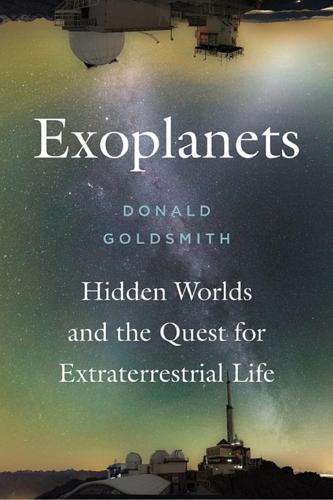
Exoplanets: Hidden Worlds and the Quest for Extraterrestrial Life
by
Donald Goldsmith
Published 9 Sep 2018
Double these times to allow for the return journey, and the trips would last a lifetime or more. But would it? Not if travel velocities rise so close to the speed of light that the effects of Einstein’s special theory of relativity play an important role.4 First published in 1905, Einstein’s theory includes the effects of “time dilation,” the slowing down of time that occurs for anyone who travels at speeds close to the speed of light. Time dilation offers a great advantage to future interstellar astronauts, allowing them to complete journeys that span dozens of light years while they age by only a few years. For example, an astronaut moving at 80 percent of the speed of light would age only 60 percent as rapidly as her twin left on Earth; at 95 percent of light speed, she would age 31 percent as rapidly, and at 99.5 percent of the speed of light, her aging would occur only 10 percent as rapidly.
…
See Photons Red dwarfs, 43, 45, 82–83, 107–8, 119, 167, 170–71 Red giants, 100, 187 Rees, Martin, 212 Roque de los Muchachos Observatory, 46, 196 Sahu, Kailash, 83 Sasselov, Dimitar, 157 Saturn, 22, 58, 66, 71–72, 79, 96, 98, 101–2, 115, 117, 121, 128, 138, 164–65, 212 Schilling, Govert, 3 Seager, Sara, 191–92 SETI (Search for Extraterrestrial Intelligence), 86, 102 Shankman, Cory, 23 Silicates, 108 Silicon, 137, 153, 219–20 Solar eclipse, 75 Sound waves, 89, 122, 202 South African Large Telescope (SALT), 196 Southwest Research Institute, 141 SPACE Act, 222 Space Interferometry Mission (SIM), 203 Spectroscopic analysis, 8, 17–18, 30, 47–49, 62, 66, 71, 111, 122, 129, 172, 182, 194, 199, 211 SPHERE (Spectro-Polarimetric High-contrast Exoplanet REsearch), 73 Spitzer Space Telescope, 79, 81, 104–7, 119, 178, 191 Spring tides, 149 Stanford University, 154 Stars brown-dwarf, 41, 69, 82 composition of, 151–52 distances of, 6–18, 31–59, 62, 77, 205–20 energy generation in, 56, 67, 82–83, 99–100, 119–20, 137, 152, 218 flares on, 31, 56, 123, 169–79, 189 formation of, 41 lifetimes of, 171 luminosity of, 43–44, 82, 93, 101–13, 117–19, 152, 163, 169, 172, 185, 207 masses of, 31–32, 79, 81 metallicity of, 153 subgiant, 99 Stein 2051 B, 83 Subgiant stars, 99 Sub-Neptunes, 129–33, 138, 144 Super-Earths, 129–33 SuperWASP, 110 Tabby’s Star, 92–95 Temperatures suitable for life. See Habitable zone TESS (Transiting Exoplanet Survey Satellite), 125, 142, 187 Thirty Meter Telescope (TMT), 194, 198–99 Tidal friction, 148 Tidal locking, 149–50 Tides, 148–49 Time dilation, 214 Timmins (Ontario), 220 Titan, 25, 165 Townes, Charles, 210 Transit observations, 14, 46, 50, 60–64, 66 Transit technique, 14, 46, 50–56, 59, 90, 102, 116, 125, 128 Transit timing variations, 112–13, 166 TRAPPIST (TRAnsiting Planets and PlanetesImals Small Telescope), 118–19 TRAPPIST-1, 82, 118–24, 166 Trimble, Virginia, 14 Turyshev, Slava, 205–6 TW Hydrae, 144, 147 Twin paradox, 214–15 Ultraviolet radiation, 8, 43, 56, 110, 123–24, 169, 177–78 University of California Irvine, 14 Los Angeles (UCLA), 205 Santa Barbara, 209 Uranus, 21–22, 27, 72, 138, 144 Van de Kamp, Peter, 20 Venus, 26, 52–55, 96, 99, 124, 155, 162 Very Large Array, 202–3 Visible light, 24–25, 55, 58, 76–79, 122, 182, 184, 189–90, 194, 209, 211–12, 215–16 Vogt, Stephen, 34, 129 Volcano, 47, 198 Walker, Gordon, 31 WASP 33b, 111 Water, 58, 60, 72, 89, 98–101, 106, 108, 111, 115, 122–23, 137–38, 143, 149, 159–68, 172–73, 186, 199, 223 WFIRST (Wide-Field InfraRed Space Telescope), 64, 167, 188–93 White dwarfs, 28, 82–83, 88 Winn, Joshua, 42, 59 Wolszczan, Alex, 24–25 Worden, Peter, 212 Wright, Jason, 155 WTF Star, 92 X rays, 8, 167

Why We Sleep: Unlocking the Power of Sleep and Dreams
by
Matthew Walker
Published 2 Oct 2017
Provide your email again so we can register this ebook and send you more of what you like to read. You will continue to receive exclusive offers in your inbox. Contents – Part 1 – This Thing Called Sleep Chapter 1 To Sleep . . . Chapter 2 Caffeine, Jet Lag, and Melatonin: Losing and Gaining Control of Your Sleep Rhythm Chapter 3 Defining and Generating Sleep: Time Dilation and What We Learned from a Baby in 1952 Chapter 4 Ape Beds, Dinosaurs, and Napping with Half a Brain: Who Sleeps, How Do We Sleep, and How Much? Chapter 5 Changes in Sleep Across the Life Span – Part 2 – Why Should You Sleep? Chapter 6 Your Mother and Shakespeare Knew: The Benefits of Sleep for the Brain Chapter 7 Too Extreme for the Guinness Book of World Records: Sleep Deprivation and the Brain Chapter 8 Cancer, Heart Attacks, and a Shorter Life: Sleep Deprivation and the Body – Part 3 – How and Why We Dream Chapter 9 Routinely Psychotic: REM-Sleep Dreaming Chapter 10 Dreaming as Overnight Therapy Chapter 11 Dream Creativity and Dream Control – Part 4 – From Sleeping Pills to Society Transformed Chapter 12 Things That Go Bump in the Night: Sleep Disorders and Death Caused by No Sleep Chapter 13 iPads, Factory Whistles, and Nightcaps: What’s Stopping You from Sleeping?
…
Rovner, Spider Communication: Mechanisms and Ecological Significance (Princeton University Press, 1982). XI. https://www.ncbi.nlm.nih.gov/pmc/articles/PMC3902880/bin/aasm.37.1.9s1.tif (source: D. J. Buysse, “Sleep Health: Can we define it? Does it matter?” SLEEP 37, no. 1 [2014]: 9–17). CHAPTER 3 * * * Defining and Generating Sleep Time Dilation and What We Learned from a Baby in 1952 Perhaps you walked into your living room late one night while chatting with a friend. You saw a family member (let’s call her Jessica) lying still on the couch, not making a peep, body recumbent and head lolling to one side. Immediately, you turned to your friend and said, “Shhhhh, Jessica’s sleeping.”
…
Your brain, it seems, is still capable of logging time with quite remarkable precision while asleep. Like so many other operations occurring within the brain, you simply don’t have explicit access to this accurate time knowledge during sleep. It all flies below the radar of consciousness, surfacing only when needed. One last temporal distortion deserves mention here—that of time dilation in dreams, beyond sleep itself. Time isn’t quite time within dreams. It is most often elongated. Consider the last time you hit the snooze button on your alarm, having been woken from a dream. Mercifully, you are giving yourself another delicious five minutes of sleep. You go right back to dreaming.
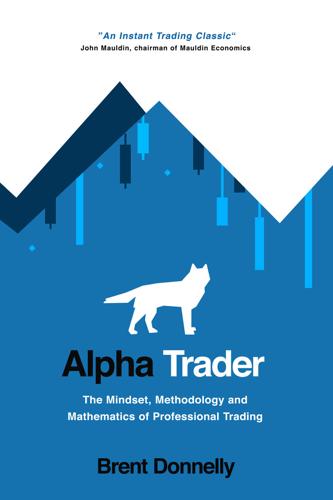
Alpha Trader
by
Brent Donnelly
Published 11 May 2021
Then, later in the day when things were quiet, I would go look at the 1-minute chart and could not see enough detail to capture what had happened. I would have to go to a 1-second chart to see the levels at which I did those 5 or 6 trades and I would realize that the entire sequence, which felt like 15 minutes, actually took more like 90 seconds. This time dilation is a common feature in sports, military action, trading, and other fast-moving pursuits that require rapid-fire, high-stakes decision making. Of course, the stakes are much higher in the military but the mental effect where time slows down is similar. Once you get that feeling of excitement, the in the zone moments where the P&L piles up so fast you can’t believe your eyes—you want that feeling again.
…
He tries to sell at 90.80 and whiffs. USDJPY is suddenly in freefall. 90.10 trades. 90.00 breaks. USDJPY has just dropped more than four percent in a few hours. A monster move. [fast markets] The trader’s eyes flick over to his P&L which has now shrunk back to six digits. Two-thirds of three days’ work, gone in 60 seconds. [time dilation] And then… Stocks sell off hard out of nowhere. Like… REALLY HARD. The S&P squawk guy is losing it. Screaming. 1100 breaks in the S&P. 1080, 1070, 1060. USDJPY is a waterfall. The squawk loses his mind as he yells: “We have some BIG paper sellers here… 7 evens are trading. 6 evens are trading!
…
He is furious with himself [forgive yourself ] because he had the right trade, waited patiently for almost three days for it to work, caught the move perfectly according to plan [stick to the plan, you win] … And then flipped the other way on a whim, for no reason and gave everything and more back in half an hour. [when you don’t stick to the plan, you lose] $2.8 million is a good month for this trader. He just made and lost that much in less than two hours. [time dilation] I am an idiot. How did I get into this mess? He needs to make a decision here and quick but he realizes that he is flooded. [Alpha Traders are self-aware] It is impossible to make a good trading decision when you’re flooded. [Alpha Traders make rational, quality decisions] He needs a second to clear his mind.

Test Gods: Virgin Galactic and the Making of a Modern Astronaut
by
Nicholas Schmidle
Published 3 May 2021
Sensors attached to Stucky’s body showed his heart rate jump forty beats a minute during the first few seconds after the rocket fired, but he felt eerily calm, like time had become an elastic concept that was stretching to let him think—a phenomenon described by another test pilot as akin to “time dilation.” Soon he and Mackay were traveling at Mach 1.8, about twice as fast as a Tomahawk cruise missile. Outside the vehicle, the light was draining from the sky, turning it a deep, muddy blue. But as the spaceship cleared 60,000 feet Stucky suddenly felt the wings tipping, like the ship wanted to flip upside down.
…
“To paraphrase Harrison Storms”: Email provided to author. “I often say that rockets”: Email provided to author. “It takes a Real Test Pilot”: Email provided to author. “I’ve got some cool SS2 fights”: Email provided to author. “You’re bug-eyed, thrilled to your toes”: Yeager and Janos, Yeager. 25: SLIPPING THE SURLY BONDS “time dilation”: Walker and Conger, “I Fly the X-15, Half Plane, Half Missile.” 26: MILLION-DOLLAR VIEW FORGER CAN’T GET IT UP: Email provided to author. “subtleness of the sea”: Melville, Moby-Dick. Three years before Neil Armstrong landed: Barton C. Hacker and James M. Grimwood, On the Shoulders of Titans: A History of Project Gemini (Washington, DC: Scientific and Technical Information Office, National Aeronautics and Space Administration, 1977).
…
Kincheloe Award from Society of Experimental Test Pilots risk tolerance and rocket-powered flight test and Rutan and Saling and at Scaled Composites Schmidle (author) and Schmidle (Robert) and Schmidle’s “Rocket Man” profile in New Yorker SETP and shunned by Scaled Siebold and in SkiGull skydiving and at Space Mirror Memorial SpaceShipTwo and SpaceShipTwo’s final glide flight (2018) before rocket-powered flights test flight with Beth Moses on board and as test pilot for NASA as test pilot in Middle East tours Scaled Composites in training squadron in Yuma, Arizona Virgin Galactic and wager with Fischer in Washington, DC at winging ceremony Stucky, Paul Stucky, Sascha Sturckow, Rick (“C.J. [Caustic Junior]”) ceremony in his honor first SpaceShipTwo space flight and Schmidle (author) and at Space Mirror Memorial “suborbital flights” Sunday Times surface-to-air missiles (SAMs) T-34 prop plane T-38s Tai, Alex Taliban Tesla Roadster “Test Gods” Test Pilot “time dilation” Tito, Dennis Today Top Gun (film) Top Gun (school) Tracy, Spencer “transonic zone” Travolta, John Trump, Donald Tyson, Neil deGrasse U-2 Under Armour United Airlines United Arab Emirates US Congress US Defense Department Vance, Ashlee Virgin Galactic absence of metrics and accuses Scaled Composites of sloppiness announces move to New Mexico author’s view of Branson’s dream of challenges faced by clings to its niche “Cosmic Brand and Marketing” division crash of SpaceShipTwo and disbonding issues and first SpaceShipTwo space flight and funding for grayout and grounds SpaceShipTwo Instagram post on “Sticky” IPO and launches Virgin Orbit lead in suborbital race in jeopardy marketing by media and as a movement move to Spaceport America no longer aiming for 328,000 feet O’Donoghue’s report to partnership with Under Armour Patterson and potential to be a viable business publicity and pursues legal action against Scaled Composites reschedules SpaceShipTwo flight rocket motor and rubber-fuel design developed by Scaled Composites and Schmidle (author) embeds with SpaceDev and Spaceship Company and SpaceShipTwo and Stucky and Sturckow and Virgin Hotel Virgin Mobile Virgin Orbit Virgin Records VMFA-333 squadron von Kármán, Theodore Voskhod Vostok Washington, DC Washington Post weather Whitehorn, Will White Knight WhiteKnightTwo at Alsbury memorial service “captive carry” test and first SpaceShipTwo space flight and flight tests and hairline cracks in at party in 2009 Whitesides, George Alsbury’s death and downplays rivalries Ericson’s loss of faith in Ericson’s resignation to fearfulness of first SpaceShipTwo space flight and h-stab problem and indecisiveness of IPO and media and Whitson, Peggy Winslet, Kate Wolfe, Tom Right Stuff, The “Truest Sport: Jousting with Sam and Charlie, The” Wright, Wilbur Wright Brothers X-1 X-15 XCOR X Prize Yamazaki, Taichi Yeager, Chuck Yousafzai, Malala Yuri’s Night Zawahiri, Ayman al- ABOUT THE AUTHOR NICHOLAS SCHMIDLE writes for the New Yorker and is the author of To Live or to Perish Forever: Two Tumultuous Years in Pakistan.
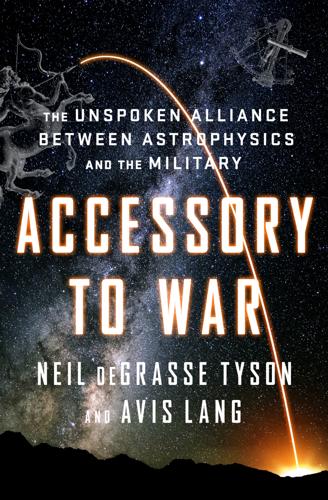
Accessory to War: The Unspoken Alliance Between Astrophysics and the Military
by
Neil Degrasse Tyson
and
Avis Lang
Published 10 Sep 2018
One is that your inner time clock will appear to tick more slowly, as seen by all those who observe you. Your time “dilates.” And muons in a cosmic-ray cascade offer one of the most striking tests of this phenomenon. Because they travel at such high speeds, we see them living ten times longer before they decay—and, as a result, reaching much deeper into Earth’s atmosphere—than they “should.” If you don’t happen to be going as fast as a muon, you’ll still experience a little time dilation. Spend six months on the International Space Station, which is traveling five miles per second around Earth (a mere 0.0027 percent the speed of light), and you will have aged 0.005 seconds less than everybody else on Earth.
…
Space-based detectors came online, superseding ground-based detectors made from recycled World War II matériel.15 Incidentally, gamma rays and a myriad of subatomic particles are generated by the collision of superhigh-energy cosmic rays with Earth’s atmosphere. Within this cascade lurks striking evidence of time dilation, a feature of Einstein’s theory of relativity. Cosmic-ray particles move through space at upward of 99.5 percent the speed of light. When they slam into the top of Earth’s atmosphere, they break down into many subproducts, each with less and less energy per particle, forming an avalanche of elementary particles that descend toward Earth’s surface.
…
Brian, 91–92 Harman, Jane, 412n Harriot, Thomas, 102 Harrison, John, 95, 96–97, 441n Harvey, Brian, 374 Harwit, Martin, 151, 223, 457n, 475n Hayabusa spacecraft (Japan), 355 Hayden Planetarium, 15, 132, 366, 451n healing, vision of future avenue to, 383–86 heat signatures, 219–20 Hecataeus of Miletus, 70 helium, discovery of, 148 Hellfire missiles, 20, 332 Henry, Paul-Pierre and Matthieu-Prosper, 148, 456–57n Henry (Prince Frederick Henry of Nassau), 104 Henry the Navigator, 79–81, 83 Herodotus, 45, 70, 423n, 434n, 440n Herschel, John Frederick William, 142 Herschel, William discovery of infrared light, 167–68, 220, 461n discovery of Uranus, 52, 167, 444n “photography” named, 142 study of sunlight, color, and heat, 167–68, 220, 461n telescope design, 444n Hertz, Heinrich, 168, 184 Hess, Rudolf, 58–59, 428n Hevelius, Johannes, 444n, 455n HEXAGON (KH-9) satellites, 205, 228–29, 230 Higgs boson, 28 hijackings of commercial airplanes, 226 Hindu astronomy and astrology, 40, 54 Hipparchus, 72, 73, 87, 93, 440n Hiroshima, Japan, 263, 301, 302, 303, 457n, 474n, 505n Historia rerum ubique gestarum (Pius II), 86 Histories (Polybius), 46–47, 119, 423–24n Hitler, Adolf appointment as chancellor of the Third Reich, 58 astrology and mysticism, 40–41, 60–62, 421n becoming Führer, 186 Beer Hall Putsch (1923), 57–58 horoscopes of, 57–58, 61, 62–63, 428n HMS Beagle, 97 Homer, 67–68 Hondius, Jocodus, 439n Hong Fan Zhuan (“Account of the Great Plan”), 43 Hooke, Robert, 109, 120 Hornsby, Thomas, 440n House Committee on Un-American Activities, 265 Howe, Ellic, 57, 58, 428n, 429n Hoyle, Fred, 402 Hubble Space Telescope civilian ownership, 233 high-resolution images of star fields, 154, 203 jitter problem, 229–30 links to KH-9 HEXAGON satellite, 227–29, 230–31 mission and discoveries, 232–33, 398 most distant galaxy, 199 proposed by Spitzer, 262 retrieval by Canadarm, 520n Hubble Wars, The (Chaisson), 227 Hughes Aircraft, 222 Hu Jintao, 376 Hulse, Russell A., 182 Hülsmeyer, Christian, 184 human body parts as measuring tools, 74–75, 93 Humboldt, Alexander von, 456n Hunter, Duncan, 412n Hurricane Maria, 181 Hussein, Saddam, 19, 20, 24, 331, 348 Huygens, Christiaan, 5–6, 36, 103, 169 Hyten, John E., 324–25, 531n ibn Mājid, Ahmad, 73, 74, 432n, 434n Iceland Christopher Columbus and, 85, 437n discovery by Irish monks, 65 Flóki saga, 430–31n Pytheas and, 71, 72, 433n Reagan-Gorbachev summit, 359 IEEE High Performance Extreme Computing Conference (2014), 224 Imago Mundi (d’Ailly), 86 immigrants in science and engineering, 21–22 Imperial America: Reflections of the United States of Amnesia (Vidal), 35 India ASATs (antisatellite weapons), 259 astrology in, 54 Bharatiya Janata Party, 54 education and life expectancy, 519n Giant Metrewave Radio Telescope, 182–83 launch services provided, 352 military spending, 353, 519n RISAT-2 satellite, 159 science and technology degrees awarded, 22 space program, 351–52 TES (Technology Experiment Satellite), 159 Indian Space Research Organisation (ISRO), 159, 352, 533n industry unity, 25, 26 Infrared Celestial Backgrounds program, 219, 221 infrared light detection of, 169–70, 199, 219–25 detector technology, 223–24, 475–76n discovery of, 146, 167–68, 220, 461n Earth’s atmosphere and, 199 emission of, 170 heat signatures, 219–20 missile detection, 219–20 nonlethal weapons using, 201 sky surveys, 219, 220–22, 223, 224–25 insulation (polyethylene), 186 Inter-Allied Military Control Commission (IAMCC), 137, 454n interferometers (radio telescopes), 182–83 Intermediate Nuclear Forces Treaty, 307 International Charter: Space and Major Disasters, 206–7 International Conference on High Performance Computing, Networking, Storage and Analysis (2012), 224 International Council of Scientific Unions, 261 international dateline, 88–89 International Geophysical Year (IGY), 261, 264, 267, 269, 292 International Launch Services, 363 International Meridian Conference, 89, 92, 98–99 International Politics of Space, The (Sheehan), 151, 522n International Space Station (ISS) ACES (Atomic Clock Ensemble in Space), 339 American astronauts ferried by Russia, 27–28, 363, 370, 372, 389 Canada and, 352, 353, 365, 368, 520n China’s exclusion from, 366, 373–74, 376–77 Columbus laboratory, 368 cost, 366, 367–68, 524n early concepts for, 352 failure of supply missions, 364, 389 history, 365–72 Japan and, 352, 355, 365, 368, 520n Kibo space laboratory, 355, 368, 520n oneness of Earth viewed from, 15, 316, 414n opposition to, 368–69 Russian service module, 363, 364, 368, 372 scheduled end of operation, 370–71, 377 Soyuz transport to, 363, 364, 370, 372, 389 spacefarer collaboration on, 316, 366 time dilation on, 218 United States as “hegemonic partner,” 370, 525n International Telecommunications Satellite Organization (Intelsat), 340, 501n invisibility, 165, 172, 175, 459–60n ionosphere ballistic missile passage through, 181, 183, 192 GPS satellites and, 333 Project Defender and, 181 and radar research, 183, 187, 190, 191–92, 465n reflection of radio waves, 176–77, 187 turbulence in, 183 Iran, 3, 299, 310, 378 Iran Deal, 378 Iraq, disintegration after Iraq War, 348, 518n Iraq Veterans Against the War (IVAW), 410n Iraq War American troops in, 24–25, 416nn antiwar movement, 10, 410n battle for Baghdad, 19–20, 348 costs of, 25, 416–17n Global Positioning System (GPS) use in, 336, 346, 348 Iraqi civilian deaths, 25, 416n military deaths and injuries, 25, 416n military satellites and, 10, 19 Operation Iraqi Freedom, 16–17, 19, 24, 197, 346–47 organizational improvements, 346–48 private contractors in, 24–25, 416n reasons for war, 11, 336, 515n space technology advancements and, 10, 344 use of military force authorized by Congress, 10–11, 410n US “troop surge,” 34 “victory” declared, 348, 518n Iraq War: Strategy, Tactics, and Military Lessons, The (Cordesman), 348 isba, 73 Ishango bone, 420n ISIS (Islamic State of Iraq and Greater Syria), 34, 514–15n Isle of Man, 71, 72 Israel, ASATs (antisatellite weapons), 259 ISR (intelligence, surveillance, and reconnaissance), 157–59, 204 ITAR (International Traffic in Arms Regulations), 374, 375, 376 It Can’t Happen Here (Lewis), 274, 315 James Webb Space Telescope, 23, 232, 233, 246–47, 533n jamming, 260, 333, 515n, 516n Jansky, Karl, 178–79, 180, 463n Japan Christianity banned in, 111 education and life expectancy, 519n firebombing of Tokyo, 301, 304 Hiroshima, 263, 301, 302, 303, 457n, 474n, 505n increasing civilian space workforce, 22, 27 and International Space Station, 352, 355, 365, 368, 520n Kibo space laboratory, 355, 368 microwave radar in World War II, 189 military spending, 353, 519n Nagasaki, 111, 263, 301, 302, 303, 474n, 505n Pearl Harbor attack in World War II, 189, 466–67n rocket development, 264, 355 Space Basic Law, 356 space program, 354–56 space spending, 354, 520n telescopes in seventeenth century, 111 Jasons, 154–55 JAXA (Japan Aerospace Exploration Agency), 32, 354–55, 520n, 533n J Dollond & Son, 130 Jena, Germany, 130, 131–32, 139, 454n Jerome, Aaron B., 126–27 João II (king), 83 Jodrell Bank Observatory, 181, 183, 191–92, 209–13, 468n see also Mark I radio telescope Johnson, Chalmers, 35 Johnson-Freese, Joan alarming US space assets, 300, 504–5n China’s space program, 373, 374, 376–77 connectivity and national security, 350 dual-use satellites, 159 International Space Station, 368 space shuttle as ASAT, 258 US space dominance prospects, 32, 396 Johnson, Lyndon B.

Coming of Age in the Milky Way
by
Timothy Ferris
Published 30 Jun 1988
Observers in motion experience a slowing in the passage of time, as well: An astronaut traveling at 90 percent of the velocity of light would age only half as fast as her colleagues back home, so that at, say, a twentieth class reunion of interstellar astronauts, those who had served the most aboard relativistic spacecraft would be the youngest. Mass, too, is rendered plastic within the framework of the light beams; objects approaching the speed of light increase in mass. The effects of relativistic time dilation, mass increase, and change in dimension are minute at ordinary velocities like that of the earth in its orbit or the sun through space (which is why it had not been noticed sooner) but become pronounced as speeds increase, and go to infinity at the speed of light. If the earth could be accelerated to the velocity of light (a feat that would require infinite energy to achieve) it would contract into a two-dimensional wafer of infinite mass, on which time would come to a stop—which is one way of saying that acceleration to light speed is impossible.
…
Johnson kicked in his famous refutation of Bishop Berkeley, and have been confirmed in scores of experiments. The relativistic increase in the mass of particles moving at nearly the velocity of light is not only observed in particle accelerators, but is what gives the speeding particles most of their punch. Relativistic time dilation has been tested by flying atomic clocks around the world in commercial aircraft; the clocks were found to run slow by just the tiny amount the theory specifies. A NASA ground controller once threatened to dock astronauts in space a fraction of a penny of their flight pay, to compensate for the decrease in the passage of time they experienced as a result of their velocity in orbit.
…
uniformitarianism, 225–229 nuclear fusion and, 248, 252–254 scientific age-dating, 221–229 thermodynamics and, 246–248, 254 ancient Greeks’ conception of, 26n conditions necessary for intelligent life on, 372–374 death of the sun and, 270 four elements as composition of, 69 mean distance from the sun (est.), 123–124 measuring velocity of, 179–180 orbit of (est.), 136–137, 138 Renaissance exploration of, 47–59 retrograde motion of, 23 stellar fusion of elements and, 279–280 triangulation of the stars and, 136–137 Eccentrics of Ptolemy, 29–30 Eddington, Arthur Stanley, 38n, 170, 203, 210, 211, 253, 272 Eddington’s number, 38n Egypt (ancient), 20 Eightfold way (hadron arrangement), 311 Einstein, Albert, 10, 11, 15, 177–178, 182–204, 211, 212, 283, 302, 364 four-dimensional space-time continuum and, 197, 198, 199–202 on Galileo, 83, 94–95 general theory of relativity of, 178, 185, 191, 196–197, 200–204 gravitation and, 120 inertial and gravitational mass and, 34, 193–196 Lemaître’s origin of the universe and, 212 on mystery of science, 385 on Newton, 103, 121 nuclear weapons and, 252, 254 quantum indeterminacy and, 290–291 quantum physics and, 178, 200 special theory of relativity of, 178, 183, 185, 191–194, 197, 200 symmetry and, 307 thought experiments of, 91, 184–185, 196–197 unified field theory and, 186, 332–333 Electromagnetic field theory, 185–188 Electromagnetism, 187, 293, 294, 295, 297 weak nuclear force and, 315, 316–318, 326, 337, 345 Electrons, 256, 257–258 early-universe theory and, 343 as fermions, 292 inflationary universe hypothesis and, 360 symmetry and, 307 Electroweak theory, see Unified electroweak theory Elements atomic nuclei of, 257 big bang as source of, 272–273, 281 cosmic element abundance curve, 277, 278 stellar nuclear fusion as source of, 271–272, 275–280 in the sun, 164–165 terrestrial, 69 Elliptical nebulae, 144, 146, 148, 152, 161–162, 165 beyond the Milky Way, 175 island universe theory of, 161, 171, 172, 173 Emission lines, 164 Emission nebula, 143 Enceladus (satellite of Saturn), 156 Epicycles of Ptolemy, 29 Equinoxes, precession of, 23n Erikson, Leif, 56n Essay on the Principle of Population, The (Malthus), 237 Euclid, 40, 41, 62, 116 Euclidean geometry, 26, 198–199 Eudoxus, 25–27, 33, 65 Evolution, theory of, see Darwinism Expansion of the universe, 205–215, 354–356, 392–393 general theory of relativity and, 205, 208–209, 210–214 Exploding stars, 167 Extraterrestrial life, 368–380 conditions necessary for, 372–374 networking of interstellar communications to determine, 375–380 SETI projects and, 371–372, 374 Falling bodies, law of, 84, 90–94 Faraday, Michael, 185–186, 188, 190 Fermi, Enrico, 212, 273, 292, 374 Fermilab accelerator, 319–320, 322, 324–325, 326, 336 Fermilab Tevatron, 340 Fermions, 292, 294 bosons and, 328 Feynman, Richard, 311n, 352, 363 Fibonacci series, 305, 306 Ficino, Marsilio, 65, 77 Field theory, 186–187 See also Quantum field theory; Unified field theory; Yang-Mills gauge field theory Finite universe, infinite universe and, 200–204 First law of thermodynamics, 247 Fission bomb (atomic bomb), 252 Fitz-Roy, Robert, 233, 245 Flamsteedjohn, 115, 153, 156 Flatness problem, inflationary universe hypothesis and, 359 Fossils, scientific age-dating of, 222–229 Four-dimensional geometry, 199, 202 Four-dimensional space-time continuum, 197, 198, 199–202 Fowler, Willy, 276, 277, 278 Fraunhofer, Joseph, 10, 139, 163–164 Fraunhofer lines, 164 Free quarks, 344 Fusion bomb (hydrogen bomb), 252, 253 Galactic plane, 159 Galaxies, 167–175 quasars and, 174 redshift-distance relation of, 207–208, 209–211, 214 stars in, 144 superclusters of, 175, 214 See also Milky Way galaxy Galilei, Galileo, 11, 69, 71, 83–101, 107, 130, 167 Einstein and, 185 inertia experiments of, 34, 91–94 law of falling bodies and, 84, 90–94 observations of planets by, 88–90, 101 Roman Catholic Church persecution of, 11, 84, 96–100 solar system and, 88–90, 123, 132 telescope and, 84, 86–88, 95–96 thought experiments of, 90–91, 92, 93–94 velocity of light determined by, 179–180 Galilei, Vincenzo, 84 Gamma Draconis, 137, 139 Gamma rays, 293, 297 Gamow, George, 212–214, 262, 263, 264 big bang and, 273–274, 277, 279 Gauge field theory, see Yang-Mills gauge field theory Gauss, Karl Friedrich, 199, 308 Gell-Mann, Murray, 294n, 310–311, 317, 330, 332, 336, 337, 340 General theory of relativity, 120, 178, 185, 191, 196–197, 200–204 expansion of the universe and, 205, 208–209, 210–214 quantum genesis hypothesis and, 362–363 scientific testing of, 203–204 space-time continuum of, 31, 32 string theory and, 330, 331 symmetry and, 307 Genes, natural selection and, 241–242 Geology radiometric age-dating and, 251–252 scientific age-dating and, 221–229 Geometry, 25–26, 40, 110 euclidean, 26, 198–199 four-dimensional, 199, 202 space-time, 364–365 symmetry in, 303–304 Giant stars, 70 lifetime of, 266–271 Glashow, Sheldon, 313, 314–317, 321, 326, 333 Global symmetry, 309–310 Globular star clusters, 170–171 Glossary of terms, 391–411 Gluons, 293–294, 312 Gödel, Kurt, 384, 385 Gold, 279 Gold, Thomas, 275, 338 Grand unified theories (GUTs), 327–328, 332–334 early-universe theory and, 345, 348 Gravitation, 293–298 contraction of the sun and, 247–248 Einstein’s conception of, 120 general theory of relativity and, 196–197 Kepler’s theories of, 94 Newton and, 103, 107–109, 113–118, 120–121, 177 stellar energy and, 280 string theory and, 330, 331 unified field theory and, 346 Gravitational mass, 194–195 equality of inertial mass and, 195–196 Graviton, 330 Graviton decoupling, 346n Great Chain of Being, 223 Greece (ancient), 20 conception of inertia in, 34–35 conception of time in, 217–220 Earth as conceived by, 26n Grossmann, Marcel, 190, 199–200 Guth, Alan, 356–357, 361–362 h (quantum of action), 286, 287 Hadrons, 311, 330 Hakluyt, Richard, 128 Hale, George Ellery, 168, 208 Half-life of radioactive materials, 250–252 Halley, Edmond, 103, 112–116, 127, 128, 131, 137, 201n publication of the Principia and, 118 Halley’s comet, 70n, 112, 113, 117, 131 Harrison, John, 129–130 Hawking, Stephen, 356, 362–364 Heavy hydrogen, 264–265 Heisenberg, Werner, 286, 287, 288, 291, 302, 333, 351–352 Heisenberg indeterminacy principle, 351–352 Heliocentric universe Aristarchus and, 35–36, 38, 43 Copernicus and, 63–68 Kepler and, 77–82 Helium, 250, 343 big bang and, 273 composition of the sun and, 265–266 stellar fusion and, 272, 278–279 Helium-3, 264–265 Helmholtz, Hermann von, 246–247, 248 Henderson, Thomas, 139 Henry the Navigator, Prince, 50–52, 53, 54, 55 Heraclitus, 33, 367 Hereditary traits, transmission of, 242 Herman, Robert, 213, 214 Herodotus, 50–51 Herschel, John, 163, 241 Herschel, William, 143, 144, 150–159, 395 Hertzsprung, Ejnar, 259, 260 Hertzsprung-Russell diagram, 259–260, 261, 263, 266 tree of stars and, 267–270 Heyerdahl, Thor, 56n Hipparchus, 29, 124 History of the universe, 415–429 stairway depiction of, 341–348 Hoffmann, Banesh, 179n Hooft, Gerard’t, 318 Hooke, Robert, 112–113, 115, 118, 137 Hooker, Joseph, 240, 244 Hoskin, Michael, 201n Hoyle, Fred, 211, 274–277, 278 Hubble, Edwin, 161, 172–174, 207–210, 211–212, 274 Hubble law, 208–210, 214 Hubble Space Telescope, 389–390 Huggins, William, 165, 167 Humason, Milton, 173, 274 Hume, David, 151 Hutton, James, 205, 225–226 Huxley, Aldous, 119 Huxley, Thomas, 243, 244–245, 247 Huygens, Christian, 118, 120, 125, 130, 136 Hyades (star cluster), 203, 259 Hydrogen atoms of, 256, 260 big bang and, 273 composition of the stars and, 260 composition of the sun and, 265–266 stellar fusion and, 272, 278–279 Hypatia, 42 Hyperdimensionality, 332–334 Imaginary numbers, 363 Imaginary time, 363, 364 Incompleteness theorem, Gödel’s, 384–385 Inertia ancient Greeks’ conception of, 34–35 Aristotle and, 92–94 Descartes on, 106 Einstein and, 193–195, 196 Galileo’s experiments on, 34, 91–94 Newton and, 34, 94, 116–117, 177 Inertial mass, 193–195 equality of gravitational mass and, 195–196 Infinite universe, finite universe and, 200–204 Inflationary universe hypothesis, 345, 356–360, 361, 362 model of, 275n Initial conditions, problem of, 122 Integer spin particles, 292 Interferometry, 180, 181 Interstellar communications network, 375–380 Interstellar space flights, 374–376 Invariance theory, 193 symmetry and, 307 Inverse-square law, 108n gravitation and, 117 Kepler’s third law and, 112–113, 114, 115, 117 Iron, 165, 279 stellar evolution and, 140–141 stellar fusion and, 275, 276–280 Irrational numbers, 305n Islamic astronomical scholarship, 43 Island universe theory of elliptical nebulae, 161, 171, 172, 173 Isospin, 31, 309 Jeans, James, 166, 167n John Paul II, Pope, 100n Jupiter, 25, 72, 112, 117 Galileo’s observation of, 88, 90 mean distance from the sun (est.), 124 satellites of, 88, 90, 158, 179 Kaluza, Theodor, 332 Kaluza-Klein theory, 332 Kant, Immanuel, 75, 143, 144–148, 150, 161, 246 Kelvin, Lord, 186, 246, 247–248, 249, 250, 280, 282 Kepler, Johannes, 66, 69, 71, 74–82, 84, 107, 136, 167, 182, 205, 346 astronomical unit estimated by, 125 date of Creation estimated by, 220 Galileo and, 94–96, 97, 98 mean distances of planets from the sun as measured by, 124 solar system and, 75, 78–82, 123 Kepler’s laws, 79–81 inverse-square law and, 112–113, 114, 115, 117 Newton’s laws and, 81, 108n, 112–113, 115 Keynes, John Maynard, 104 Kirchhoff, Gustav, 164–165 Klein, Oskar, 332 Kopernik, Mikolai, see Copernicus, Nicolaus Koran, the, 43 Lamarck, Jean-Baptiste de, 236 Lamarckism, 236 Lambert, Johann Heinrich, 144, 149–150, 161 Laplace, Pierre-Simon de, 161, 290–291 Large Magellanic Cloud, 70, 175, 327 Law of falling bodies, 84, 90–94 Law of universal gravitation, 81 Laws of thermodynamics, 247 Lead, 279 Leavitt, Henrietta Swan, 169–170, 171, 172, 258 Le Gentil, Guillaume, 133–134 Lemaître, Georges, 210–211, 212, 214, 274 Leptons, 294–296, 350 Light as electromagnetic field, 187n, 188 velocity of, 179–180 Light-year, 38 Linde, Andrei, 393–394 Linear time, 220–225 Lithium, 278, 343 Little Dipper, 57 Lobachevski, Nikolai Ivanovich, 199 Local Group of galaxies, 175 Local symmetry, 309–310 Locke, John, 118, 119, 223 Longitude, determination of, 128–130 Lookback time, 174 Lorentz, Hendrik Antoon, 181, 182, 191, 197, 203 Lorentz contractions, 181–182 special theory of relativity and, 181, 191 Lucretius, 33, 90n, 201, 369 Luther, Martin, 67, 369 Lyell, Charles, 217, 225, 226–229 Darwin and, 229, 231, 232, 239, 242, 243, 244 Mach, Ernst, 190–191, 386 Magellan, Ferdinand, 48, 56n, 59 Magellanic Clouds, 70, 169–170, 171, 175, 327 Magnesium, 165, 272 Magnetic monopoles, 356–357 Malthus, Thomas, 237 Many body problem, 121 Mars, 117 Kepler’s study of, 78–79 life on, 394 mean distance from the sun (est.), 124 measurement of diameter of, 125 retrograde motion of, 24, 25 spacecraft mission to, 371 triangulation of, 126, 130 Mason, Charles, 132–133 Mass inertia and, 193–195, 196 Newton’s laws and, 116–117 relativistic time dilation and, 192–193 Mathematical Syntaxis (Ptolemy), 28–29 Matter building blocks of, 294–296 electromagnetism and, 193 Maury, Antonia, 258, 259 Maxwell, James Clerk, 10, 185–188, 190, 255 Maxwellian velocity distribution theory, 263 Medici, Cosimo de, 95, 96 Mendel, Gregor, 242 Mercury, 23, 68, 279 death of the sun and, 270 mean distance from the sun (est.), 124 transit of, 131 Messier, Charles, 157 Meteorites, 252 Michelson, Albert, 180, 182 Michelson-Morley experiment, 11, 180–181, 188 aether drift theory and, 188, 192 Micrometry, 125 Microwave radiotelescope, 213, 347 Milky Way galaxy, 48, 96, 144, 145, 146, 149, 152, 161, 162 big bang and, 272–273 dark nebulae in, 144, 158 diameter of, 171 early-universe theory of, 341 ecology of, 266–267 elements in, 277 galaxies beyond, 175 Galileo’s observation of, 89, 90 location in the solar system of, 168–175 spectroscopy and, 166 spiral arms of, 153, 174 Milton, John, 76, 83, 101 Mimas (satellite of Saturn), 156 Minkowsky, Hermann, 197–198 Moon, 22 Galileo’s observation of, 88, 90 Newton’s laws of gravitation and, 107 Moon rocks, 252 Morrison, Philip, 371 Music, symmetries in, 304–305 Mutuality of gravitation, 117–118 NASA’s interstellar spacecraft study, 375 Natural selection theory of evolution, see Darwinism Navigation astronomy as tool for, 20–21, 47–49, 52 determination of longitude and, 128–130 Nebulae, 151–152 bright, 143–144 elliptical, 144, 146, 148, 152, 161–162, 165 Herschel’s study of, 150–159 island universe theory of, 161, 171, 172, 173 nature of, 144 planetary, 143, 157 spiral, 144, 162, 165–166 Nebular hypothesis, 161, 162, 165–166 defects in, 166–173 Ne’eman, Yuval, 311 Neoplatonism, 64, 65 Networking of interstellar communications, 375–380 Neutrino decoupling, 344 Neutrinos, 264, 265, 327, 344 Neutrons, 256 as fermions, 292 quarks and, 296, 338, 340 symmetry and, 307 Neutron star, 279 Newton, Humphrey, 113, 115–116 Newton, Isaac, 101, 103–122, 127, 128, 152, 161 the calculus invented by, 106, 108–110 date of Creation estimated by, 220 Einstein and, 177, 178, 183, 184, 193n gravitation and, 103, 107–109, 113–118, 120–121, 177 inertia and, 34, 94, 116–117, 177 Kepler’s third law and, 81, 108n, 112–113, 115 the Principia of, 103, 115–118, 119, 120–121 reflecting telescope of, 110–112 stellar distances measured by, 136 Newton’s first law, 116–117 Newton’s second law, 117 Newton’s third law, 117 Nickel, 277 Nitrogen-14, 251 Noneuclidean geometries, 198, 199 Novikov, Igor, 280 Nuclear energy, 248 Nuclear forces, see Strong nuclear force; Weak nuclear force Nuclear fusion, 248, 252–254, 367 See also Stellar nuclear fusion Nuclear physics, 211–212 Nuclear weapons, 252–254 Nucleons, 293, 294 Observational astrophysics, 168 Olbers, Wilhelm, 201n Olbers’s paradox, 201n Oldenburg, Henry, 111, 112 “On the Electrodynamics of Moving Bodies” (Einstein), 193 On the Heavens (Aristotle), 28, 69 On the Revolutions (Copernicus), 63, 64, 65, 66, 67–68, 84, 98 Öpik, Ernst, 275–276 Oppenheimer, Robert, 279, 310 Optics, 110, 163, 187 Oresme, Nicole, 64–65 Origin of Species, The (Darwin), 68, 116, 236, 242, 243–244, 245, 248 Origin of the universe, see Cosmogony Orion Nebula, 157 Oxygen, 272 Pangenesis theory of Darwin, 242 Parallax (triangulation), 125–126, 127, 130 of the stars, 136–141 Parity violation in the weak nuclear force, 313 Particle physics -cosmology link, 335–348 time and, 337–340 Pauli, Wolfgang, 292, 310, 333 Pauli exclusion principle, 292, 293 PEP accelerator, 333 PETRA accelerator, 333 Photinos, 333 Photon decoupling, 343 Photons, 258, 264–265, 318, 337 early-universe theory and, 343 released by the big bang, 212n, 213, 214 Pi, value of, 40 Pi mesons, 318 Planck, Max, 183, 193, 258, 286 Einstein and, 204n Planetary nebulae, 143, 157 Planetesimals, 167n Planets, 22–23 Copernicus and, 68 elliptical orbit of, 66 extrasolar, 394–395 Kepler’s laws and, 79–81 mean distances from the sun (est.), 124 measuring distances via micrometry and triangulation, 125–126, 127 Newton’s laws and, 107, 117, 120–121 retrograde motion of, 23, 24, 25, 26–27 spacecraft missions to, 370, 371 transit of, 130–136 See also names of planets Plato, 19, 25–26, 27, 31, 62, 64, 65, 75, 145, 217 Pleiades (star cluster), 259, 263 Hertzsprung-Russell diagram for, 269–270 Plutarch, 33, 39, 40 Poincaré, Henri, 181–182, 193, 201 Polaris (North Star), 57 Pole star, 52 Political power, use of astronomy for, 22 Polo, Marco, 47, 49–50, 54 Popper, Karl, 383 Portable telescopes, 163 Positrons, 308 Pound, James, 137, 153 Precession of equinoxes, 23n Primordial atom, 211, 212 Principia (Newton), 103, 115–118, 120–121 publication of, 118–119, 120 Printing press, invention of, 62–63 Probes in interstellar flight, 374–375, 376 Project Ozma (SETI experiment), 372 Proton accelerators, 319–326 Proton-antiproton collider, 324–326 Proton-proton chain reaction for stellar nuclear fusion, 263–265, 272, 278 Protons, 262, 264–265 as fermions, 292 half-life of, 327 heat of stars and, 260–261 penetration of the Coulomb barrier by, 262, 264–265 quarks and, 338, 340 symmetry and, 307 Ptolemy, Claudius, 28–31, 33, 34, 38, 40, 62, 63, 69, 72, 124, 145 Islamic astronomy and, 43 Pythagoras, 35, 217 Pythagorean doctrine of celestial harmony, 75–77 Q and A time for interstellar radio signals, 376, 377, 378 Quantum chromodynamics (QCD), 297, 311, 312, 313 Quantum electrodynamics (QED), 297, 315–316 Quantum field theory relativistic, 297, 337 string theory and, 328 symmetry and, 312–313 Quantum genesis hypothesis, 351, 362–365 Quantum indeterminacy, 287–288 Einstein and, 290–291 proton action and, 262 quantum genesis hypothesis and, 365 Quantum leap, 288 Quantum mechanics, 200, 257 string theory and, 330, 331 Quantum numbers, 31 Quantum physics, 178, 183, 186, 200, 286–299, 367 four fundamental forces in, 293–294, 295 standard model theories for, 292–299 symmetry and, 307–309 Quantum principle, 286–287 Quantum tunneling, 262–263 Quantum vacuum, 351–352 Quarks, 293, 294–295, 350 antiquarks and, 344 big bang and, 338, 339, 340 inflationary universe hypothesis and, 360 symmetry and, 312 Quasars, 174, 390 Radioactive decay, 293 Radioactivity, 248, 249–254, 255, 256 Radio astronomy, 213–214 Radiometric age-dating, 250–252 age of the solar system by, 266 Radio telescopes, 213, 347 SETI projects and, 371–372, 374, 376 Radium, 249, 250 Red giant stars, 269, 270 Redshift-distance relation of galaxies, 207–208, 209–211, 214 Reflecting telescope, 110–112, 154, 168 Refracting telescope, 152–157, 158 Relativistic quantum field theories, 297, 337 Relativistic time dilation, 192–193 Relativity (term), 193, 285–286 See also General theory of relativity; Special theory of relativity Renaissance, 47–59 Retrograde motion of planets, 23, 24, 25 Eudoxus and, 26–27 Roman Catholic Church Copernicus’s heliocentric theory and, 67 persecution of Galileo by, 11, 84, 96–100 Rubbia, Carlo, 322–323, 324–326 Russell, Henry Norris, 168, 259–260, 261 Rutherford, Ernest, 249–250, 256, 282 Salam, Abdus, 313, 314, 316, 317, 321, 326 Sandage, Allan, 174, 351 Saturn, 23, 43, 73, 117 mean distance from the sun (est.), 124 Saturn (cont.)
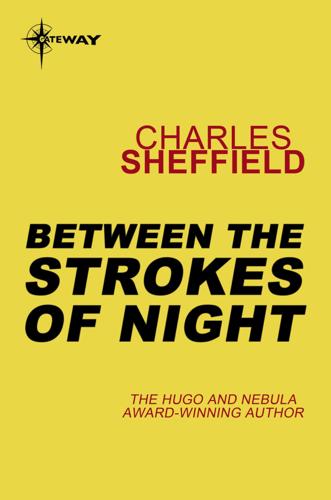
Between the Strokes of Night
by
Charles Sheffield
Published 28 Apr 2013
There’s no way that the Argo’s engines can slow us down enough for a Gulf City rendezvous.” Sy shook his head. “My bet is we don’t need to worry about that. If they could speed us up without our knowing it, they can slow us down the same way. I wonder just how fast we’re moving. There has to be significant time dilation. Eva, can you get a handle on that, see what sort of a time compression factor we can look forward to? We’re not just going home — we’re going home in style.” Sy, rarely for him, was showing a little excitement. Everyone else, with the possible exception of Korwin, was delighted to be racing home at such high speed.
…
Even when the nature of the favor, as an accelerated return to Gulf City, was recognized, its magnitude had yet to be measured. The result, reported by Eva Packland and Gus Eldridge, staggered everyone — even the phlegmatic Sy. “Ninety-nine point nine nine seven percent of light-speed,” he said. “Let’s see now.” He entered a couple of numbers into his own hand-held. “That gives us a time dilation factor of almost a hundred and thirty. Shipboard travel time back to Gulf City will be less than seventeen years. Which means just three days in S-space. We’ll be there before we know it.” “And then what?” Dan Korwin seemed in a state of permanent rage. The loss of Judith Niles had left a leadership gap, which Korwin obviously felt best qualified to fill.
…
We spent most of the trip out in T-state or cold sleep, so not much subjective time passed for us, but we knew that back here on Gulf City more than seven S-years would flash by while we were on the way there. It would take another S-year for us to return, so far as people here were concerned — our time dilation on the way back because of relativistic effects did not apply to them at all. “We knew all this; knew, no matter what happened, that so far as anyone on Gulf City was concerned we might be gone for ten S-years, allowing a reasonable span for us to explore Urstar and try to discover what had happened there.
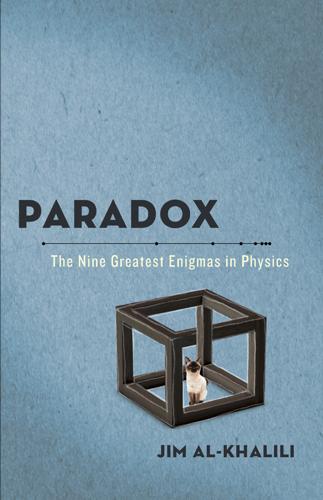
Paradox: The Nine Greatest Enigmas in Physics
by
Jim Al-Khalili
Published 22 Oct 2012
But even at the much more modest speed of, say, the Apollo Moon mission spacecrafts (about 40,000 kilometers per hour), the effect on time is still there, with the traveling clocks and mission control clocks falling out of sync by nanoseconds every second—tiny differences too small to need to be taken into account, but certainly measurable. We will return briefly to this example in a little while. But let’s quickly look at another real-world example, where this effect is important (we will come on to one more a bit later). The slowing down of time in high-speed travel is known as “time dilation” and is routinely taken into account in physics experiments, particularly those in which subatomic particles are accelerated in “atom smashers” such as the Large Hadron Collider at CERN in Geneva. There, particles can reach speeds so close to that of light that if such “relativistic” effects were not taken into account, the experiments would not make any sense.
…
Since the watch is now higher up it will feel a slightly weaker gravitational pull and run a little faster. This effect is real, but so tiny as to make the exercise rather pointless. For instance, to make up just one second I would have to keep my arm aloft for several hundred million years! In some situations, the two types of time dilation effect (due respectively to special and general relativity) can act against each other. Consider two clocks, one on the ground and one in a satellite in orbit around the Earth. Which one will be running more slowly? To the clock on the ground, the high-speed motion of the clock in orbit should be making it run slower, while the fact that it is in free fall around the Earth and therefore not feeling any gravity should be making it run faster.
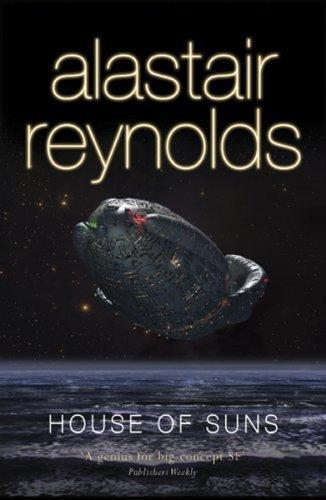
House of Suns
by
Alastair Reynolds
Published 16 Apr 2008
There are some modifications that help me process memories and the strands of my fellow shatterlings, but Abigail never touched the deep architecture. Our minds just aren’t engineered to experience that much time in the raw.’ ‘You would go mad.’ ‘I’d need help.’ ‘You must wonder how we have coped. It is known that curators are very old, very long-lived. Unlike you, unlike the late Rimrunners, we do not have the luxury of time-dilation to make the centuries fly past.’ ‘You appear to be managing well enough.’ ‘You would presume to know?’ ‘The mere continued existence of the Vigilance is evidence that you have overcome the difficulties of extreme longevity. No other stellar-based culture has endured as long.’ ‘There would be no point in the Vigilance if it was ephemeral.
…
‘We could have stopped them, if it came to that.’ ‘Not necessarily. If a civilisation built a fleet and launched it towards Andromeda, there’s no guarantee that the Lines would have been able to neutralise it before it arrived. And even if the turnover civilisation perished, the fleet would still be on its way, protected by time-dilation. Nothing would have been able to catch up with it, if it was moving sufficiently close to light.’ ‘Fine, so there’s a case for secrecy. But turnover civilisations aren’t stupid. Some of them would have made their own observations of Andromeda, and seen the same evidence of Prior manipulation.’
…
By then, Abigail and the other Line founders had already shattered themselves into the likes of us, choosing one pathway to immortality, and had begun their knowledge-thirsty spread into an empty galaxy. Perhaps others had already embarked on the long process of change that would turn them into the curators of the Vigilance, choosing a different pathway. For Valmik, neither shattering, time-dilation nor biological transformation offered sufficient guarantees. He wished instead to make himself into a machine, so that his consciousness might be embodied in something as close to indestructible as physics allowed. Neurone by neurone, he allowed his brain to be supplanted by mechanical parts. Since the process was gradual - akin to the continuous redevelopment of a city, rather than sudden demolition and replacement - the man felt no change in his consciousness between the replacement of one neurone and the next.
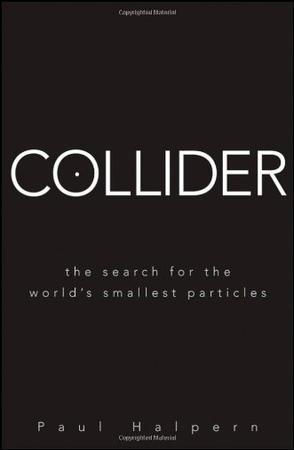
Collider
by
Paul Halpern
Published 3 Aug 2009
Einstein would devote much of his youthful creativity to resolving this seeming contradiction. Einstein’s special theory of relativity, published in 1905, cleared up this mystery. He modified Newtonian mechanics through extra factors that stretch out time intervals and shrink spatial distances for travelers moving close to light speed. These two factors—known respectively as time dilation and length contraction—balance in a way that renders the measured speed of light the same for all observers. Strangely, they make the passage of time and the measurement of length dependent on how fast an observer happens to be moving, but that’s the price Einstein realized he had to pay to reconcile Maxwell’s equations with the physics of motion.
…
symmetry origins of the universe and clues in Standard Model and concept of breaking of synchrotrons early examples of fixed-target in Superconducting Super Collider (SSC) Szilard, Leo tau leptons tau neutrino tauons Teller, Edward Tesla coils Tevatron, Fermi National Accelerator Laboratory Texas Accelerator Center Texas National Research Laboratory Commission (TNRLC) Thomson, J. J. (Joseph John) Bohr and at Cavendish Laboratory “plum pudding” model of atoms of research on elementary particles by Thomson, Thomas Thonnard, Norbert ’t Hooft, Gerard thorium Tigner, Maury time, as the fourth dimension time dilation time-reversal invariance Tomonaga, Sin-Itiro top quarks TOTEM (TOTal Elastic and diffractive cross-section Measurement) Townshend, Paul transformers Trilling, George Trinity test, Manhattan Project tritium true vacuum Turner, Michael Tuve, Merle UA1 (Underground Area 1) UA2 (Underground Area 2) Uhlenbeck, George ultraviolet catastrophe ultraviolet radiation uncertainty principle U.S.
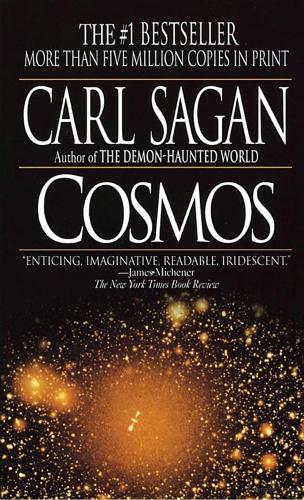
Cosmos
by
Carl Sagan
Published 1 Jan 1980
If you travel toward the observer at almost the speed of light, you will become enveloped in an eerie chromatic radiance: your usually invisible infrared emission will be shifted to the shorter visible wavelengths. You become compressed in the direction of motion, your mass increases, and time, as you experience it, slows down, a breathtaking consequence of traveling close to the speed of light called time dilation. But from the standpoint of an observer moving with you—perhaps the scooter has a second seat—none of these effects occur. These peculiar and at first perplexing predictions of special relativity are true in the deepest sense that anything in science is true. They depend on your relative motion.
…
A speed is a distance divided by a time. Since near the velocity of light we cannot simply add speeds, as we are used to doing in the workaday world, the familiar notions of absolute space and absolute time—independent of your relative motion—must give way. That is why you shrink. That is the reason for time dilation. Traveling close to the speed of light you would hardly age at all, but your friends and your relatives back home would be aging at the usual rate. When you returned from your relativistic journey, what a difference there would be between your friends and you, they having aged decades, say, and you having aged hardly at all!
…
We do not have fusion reactors yet, but they are confidently expected in the new few decades. Orion and Daedalus might travel at 10 percent the speed of light. A trip to Alpha Centauri, 4.3 light-years away, would then take forty-three years, less than a human lifetime. Such ships could not travel close enough to the speed of light for special relativistic time dilation to become important. Even with optimistic projections on the development of our technology, it does not seem likely that Orion, Daedalus or their ilk will be built before the middle of the twenty-first century, although if we wished we could build Orion now. For voyages beyond the nearest stars, something else must be done.
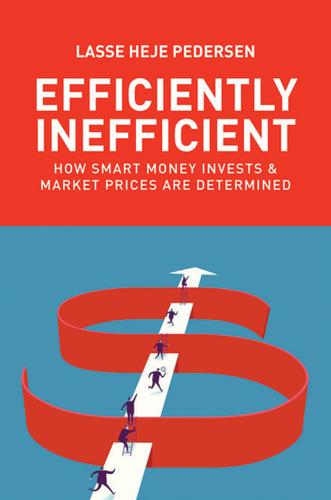
Efficiently Inefficient: How Smart Money Invests and Market Prices Are Determined
by
Lasse Heje Pedersen
Published 12 Apr 2015
I respect Abby, but she was a very different kind of analyst than we were. But we did it, she got it, and gave us the thumbs up. LHP: What else is different in the real world? CSA: Well, the single biggest difference between real world and academia is—this sounds over scientific—time dilation. I’ll explain what I mean. This is not relativistic time dilation as the only time I move at speeds near light is when there is pizza involved. But to borrow the term, your sense of time does change when you are running real money. Suppose you look at a cumulative return of a strategy with a Sharpe ratio of 0.7 and see a three-year period with poor performance.
…
The tech bubble was a period when value was strongly out of favor and momentum helped, but not nearly enough. It turns out we timed the launch of our business and our first fund right before the start of the tech bubble, literally just before the start of its really crazy phase. Remember the idea behind time dilation I mentioned before? Our tough start lasted about 18 months, but it felt like a lifetime. LHP: How did investors react to the tough start? CSA: Many of our investors stuck with us, especially those who really understood our process, and we showed them lots of evidence that the Internet valuations didn’t make sense and that, going forward, our investments looked even better.

The Simulation Hypothesis
by
Rizwan Virk
Published 31 Mar 2019
Of course, Scott didn’t go very fast or very far when compared to the speed of light or possible astronomical distances (at 28,000 km/hr, this was less than 1 percent of the speed of light). Atomic clocks, which are synchronized to sub-milliseconds, have been taken up in spaceships and have proven that time dilation is real—they too have come back out of sync with their counterparts that stayed on Earth. An unexpected implication of the theory of relativity is that there is no way to tell if two things are actually simultaneous. It really depends on the inertial reference frame of the observer. One person who is close to both events might view two events as happening simultaneously, while another who views the two events from very different distances might need to wait for the speed of light to reach them—which might happen at different times.
…
If our 3D physical reality consists of pixels spread out virtually, and if we were to traverse all the pixels of this virtual universe, it would take us an unbelievably long time to get to any place interesting outside of our own solar system—even if we were to travel at the speed of light. The nearest star system, Alpha Centauri, is 4.5 light years away, and the Milky Way galaxy is approximately 100,000 light years across. Of course, with time dilation, traversing this distance might seem to take less time, but we wouldn’t be able to get back to the same point. This brings us to the idea of quantum entanglement. This is when two particles become “entangled,” meaning it is theoretically possible from the state of one particle to guess the state of the corresponding entangled particle instantaneously, even if it is far away.

Pale Blue Dot: A Vision of the Human Future in Space
by
Carl Sagan
Published 8 Sep 1997
Careful and repeated observations show that his justly celebrated theory is an accurate description of how the world is made. Our commonsense intuitions can be mistaken. Our preferences don't count. We do not live in a privileged reference frame. One consequence of special relativity is time dilation—the slowing down of time as the observer approaches light speed. You can still find claims that time dilation applies to watches and elementary particles—and, presumably, to circadian and other rhythms in plants, animals, and microbes—but not to human biological clocks. Our species has been granted, it is suggested, special immunity from the laws of Nature, which must accordingly be able to distinguish deserving from undeserving collections of matter.

Gateway
by
Frederik Pohl
Published 15 Dec 1977
The sherry is all he says it is, and I can feel the warmth of it expanding inside me. “Okay,” I say, setting the glass down. “Well. When I got back to Gateway they’d written the expedition off. We were almost a year overdue. Because we’d been almost inside the event horizon. Do you understand about time dilation?…Oh, never mind,” I say, before he can answer, “that was a rhetorical question. What I mean is, what happened was the phenomenon they call time dilation. You get that close to a singularity and you come up against the twin paradox. What was maybe a quarter of an hour for us was almost a year by clock time—clock time on Gateway, or here, or anywhere else in the nonrelativistic universe, I mean.
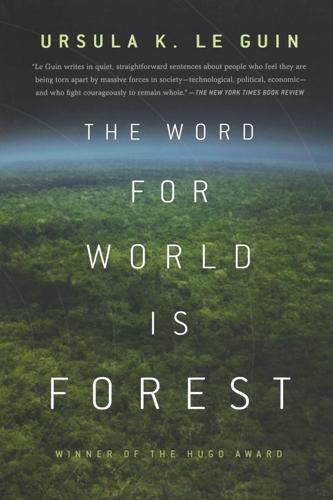
The Word for World Is Forest
by
Ursula K. le Guin
Published 1 Mar 1972
Since arrival in orbit the Shackleton has been in daily communication with Terra, now 27 lightyears distant. The message does not take 54 years for delivery and response, as it does on an electromagnetic device. It takes no time. There is no more time-gap between worlds." "As soon as we came out of NAFAL time-dilatation into planetary space-time, here, we rang up home, as you might say," the soft-voice Commander went on. "And were told what had happened during the 27 years we were traveling. The time-gap for bodies remains, but the information lag does not. As you can see, this is as important to us as an interstellar species, as speech itself was to us earlier in our evolution.
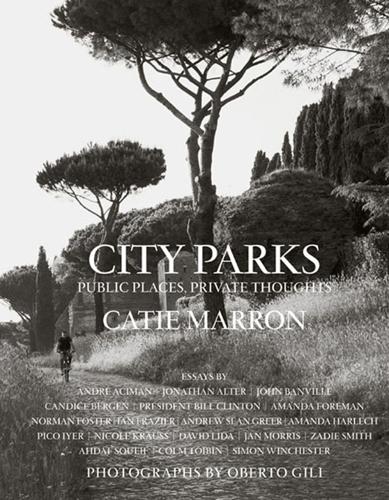
City Parks
by
Catie Marron
Without real or imagined traces of time, without the inflection of memory, or of something that borrows the circuits of memory, and passes for memory, but may not be memory at all, we’ll never see, much less understand, what lies before us. It is time that confers meaning to the High Line; time is the film we bring to everything we wish to see when we hope to amplify what our eyes are seeing. Time dilates the senses. Time is about the footprint, not the foot; the luster, not the light; the resonance, not the sound, the trace, not the thing. Time is how we fantasize, privatize, and ultimately seize and understand the beauty of what lies around us. Then and now. When you lean against the High Line’s railing and stare at the view from what was the trellised old El, it is about time that you want to think.
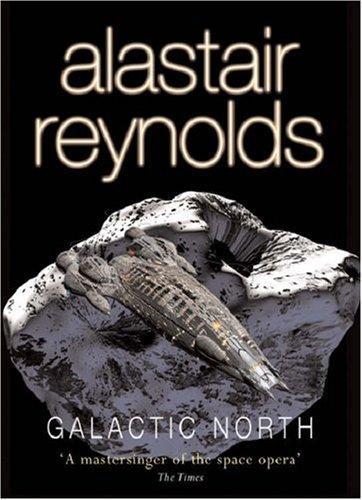
Galactic North
by
Alastair Reynolds
Published 14 Feb 2006
Even if we didn’t have another ship to worry about, we were in more than enough trouble. We were too far out from Shiva-Parvati to get back again, and yet we were moving too slowly to make it to another system. Even if the engines kept working as they were now, we’d take far too long to reach relativistic speed, where time dilation became appreciable. At twenty-five per cent of the speed of light, what would have been a twenty-year hop before became an eighty-year crawl now . . . and that was an eighty-year crawl in which almost all that time would be experienced aboard ship. Across that stretch of time, reefersleep was a lottery.
…
Nonetheless I insisted on this one ridiculous circuit, convinced it would leave me eased. Most of these sleepers would stay aboard when we arrived in the Earth system. They were refugees from the Melding Plague, seeking sanctuary in the future. At the nearlight speeds this vessel attained between suns, large levels of time dilation would be experienced. Our clocks would grind to an imperceptible crawl. After thirty or forty years of shiptime, a mere six or seven hops between systems, more than a century would have elapsed on Yellowstone, enough time for eco-engineers to exorcise the biome of the Melding Plague. The sleepers we carried had elected not to risk spending the time in the planet’s community cryocrypts; in dilation sleep the effective time spent in reefers was less, and therefore their chances of completely safe revival were enormously increased.

When Breath Becomes Air
by
Paul Kalanithi
and
Abraham Verghese
Published 12 Jan 2016
Part of the cruelty of cancer, though, is not only that it limits your time; it also limits your energy, vastly reducing the amount you can squeeze into a day. It is a tired hare who now races. And even if I had the energy, I prefer a more tortoiselike approach. I plod, I ponder. Some days, I simply persist. If time dilates when one moves at high speeds, does it contract when one moves barely at all? It must: the days have shortened considerably. With little to distinguish one day from the next, time has begun to feel static. In English, we use the word time in different ways: “The time is two forty-five” versus “I’m going through a tough time.”
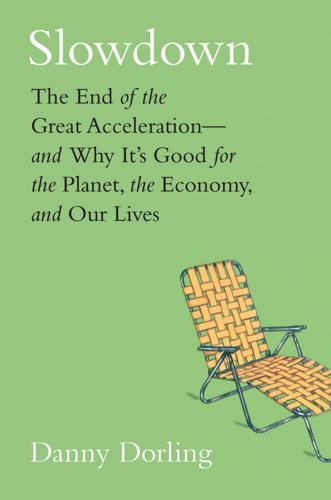
Slowdown: The End of the Great Acceleration―and Why It’s Good for the Planet, the Economy, and Our Lives
by
Danny Dorling
and
Kirsten McClure
Published 18 May 2020
As a student at Newcastle University in the 1980s, I once met a “time lord” whose job it was to ensure that the very early internet kept time to a fraction of a nanosecond. He rode a Harley-Davidson and worked in the sub-basement of Claremont Tower (I am ashamed to admit I was most impressed by his motorbike!). Today our measurements are so accurate that we can now tell when time itself slows down or speeds up due to time dilation, but even that little-known process was predicted by Einstein and first measured as long ago as 1938.13 How did we travel so very quickly, in just 282 years, from first measuring time with only rough accuracy with a pendulum to understanding that time itself was not constant? You can take six steps forward from 1656, each spanning forty-seven years, and marvel at the fact that at each step our measurement of time improved by at least one order of magnitude.
…
Stacy Taylor, “History of the Pendulum,” Sciencing, 24 April 2017, accessed 11 February 2019, https://sciencing.com/history-pendulum-4965313.html. 13. Sascha Reinhardt, Guido Saathoff, Henrik Buhr, Lars A. Carlson, Andreas Wolf, Dirk Schwalm, Sergei Karpuk, Christian Novotny, Gerhard Huber, Marcus Zimmermann, Ronald Holzwarth, Thomas Udem, Theodor W. Hänsch, and Gerald Gwinne, “Test of Relativistic Time Dilation with Fast Optical Atomic Clocks at Different Velocities,” Nature Physics, 11 November 2007, 861–64, https://www.nature.com/articles/nphys778. 14. This may have been somewhat easier to do in the 1960s with the aid of new hallucinogens, although Samuel Coleridge was already using opiates back in 1797 when he wrote the poem Kubla Khan, subtitled Or a Vision in a Dream.

The Fabric of Reality
by
David Deutsch
Published 31 Mar 2012
For example, an astronaut who went on a round-trip involving acceleration to speeds close to that of light would experience much less time than an observer who remained on Earth. This effect is known as time dilation. By {290} accelerating enough, one can make the duration of the flight from the astronaut's point of view as short as one likes, and the duration as measured on Earth as long as one likes. Thus one could travel as far into the future as one likes in a given, subjectively short time. But such a trip to the future is irreversible. The return journey would require past-directed time travel, and no amount of time dilation can allow a spaceship to return from a flight before it took off. Virtual reality and time travel have this, at least, in common: they both systematically alter the usual relationship between external reality and the user's experience of it.
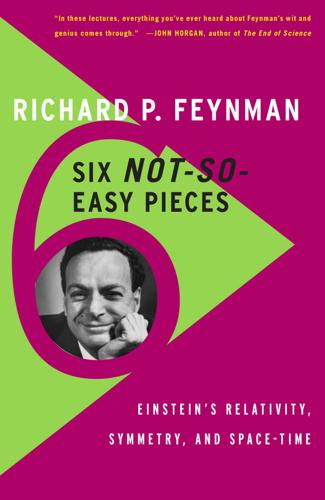
Six Not-So-Easy Pieces: Einstein’s Relativity, Symmetry, and Space-Time
by
Richard P. Feynman
,
Robert B. Leighton
and
Matthew Sands
Published 22 Mar 2011
The only relevant question is whether the ideas are consistent with what is found experimentally. In other words, the “strange ideas” need only agree with experiment, and the only reason that we have to discuss the behavior of clocks and so forth is to demonstrate that although the notion of the time dilation is strange, it is consistent with the way we measure time. Finally, there is a third suggestion which is a little more technical but which has turned out to be of enormous utility in our study of other physical laws, and that is to look at the symmetry of the laws or, more specifically, to look for the ways in which the laws can be transformed and leave their form the same.
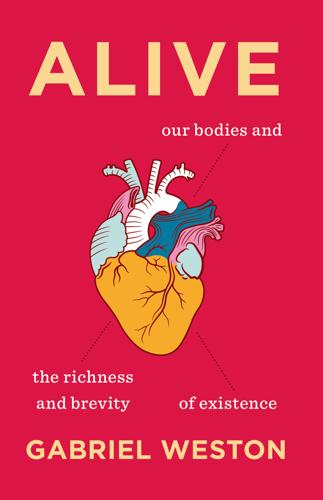
Alive
by
Gabriel Weston
Published 15 Aug 2025
And Albert Einstein revolutionised the way we look at this fundamental dimension by proving with his General Theory of Relativity that, far from being universal, time is affected by gravity and acceleration, differing measurably between things, depending on their frame of reference. There are as many timelines as there are objects, he declared. Two identical, synchronised clocks put on top of Everest and at sea level will diverge by about thirty microseconds per year. These time-dilation effects influence all clocks, even biological ones like our organs. But the philosophy of time that makes most sense to me is phenomenology. Distinguishing between objective and subjective time, phenomenologists note that we humans perceive the two quite differently. No wonder it’s hard to get to grips with the mindfulness programme, with its exhortation to live in the now.
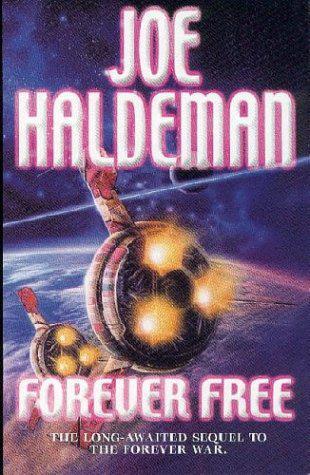
Forever Free
by
Joe Haldeman
Published 14 Oct 2000
Their physical age went from late thirties to early fifties, in Earth years. The years here were three times as long. I guess people would eventually become used to the idea of starting school at 2, puberty before 4, majority at 6. But not my generation. I had been physically 32 when I got here, although if you counted from birth date, ignoring time dilation and collapsar jumps, I was 1,168 in Earth years. So I was 50 nowor "32 plus 6," as some vets said, trying to reconcile the two systems. The vets began to arrive, by ones, twos, and fours. Usually about fifty showed up, about a third of those within walking distance. One was an observer, with a holo recorder, who came from the capital city, Centrus.
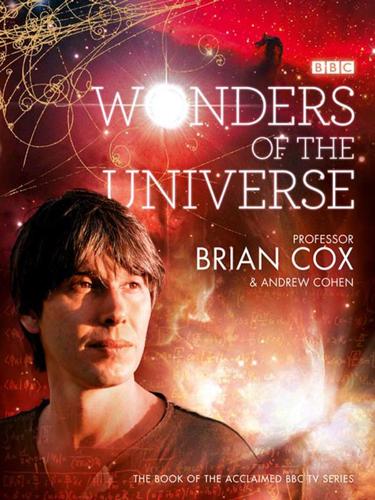
Wonders of the Universe
by
Brian Cox
and
Andrew Cohen
Published 12 Jul 2011
This means that the peaks and troughs of the laser light beam are arriving more frequently than they did when they set off. So, from the point of view of someone on the ground, the clock above the ground will be running slightly fast. Is this true? Yes, it is. The effect is known as gravitational time dilation; gravity slows down time, so clocks close to the ground run slower than those in orbit. In the language of General Relativity, we might say that the presence of Earth bends spacetime near it such that time passes more slowly than it does far away. This is a very real effect and is one that has to be taken into account in the GPS satellite navigation system, which relies on precise timekeeping to measure distances.
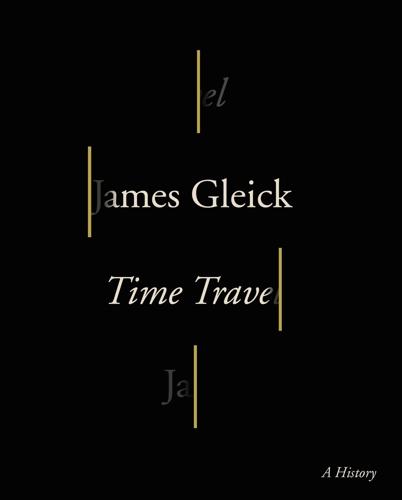
Time Travel: A History
by
James Gleick
Published 26 Sep 2016
His point is that acceleration and gravitation both slow the clocks, relativistically, so you could age a year or two on a spaceship and return home a century hence to marry your great-grandniece (as Tom Bartlett does in Robert Heinlein’s 1956 novel Time for the Stars). This is proven. GPS satellites have to compensate for relativistic effects in their very exact calculations. It’s hardly time travel, though. It is time dilation (per Einstein, Zeitdilatation). It’s an antiaging device.*2 And it’s a one-way street. There’s no going back to the past. Unless you can find a wormhole. “Wormhole” is John Archibald Wheeler’s word for a shortcut through the warped fabric of spacetime—a “handle” of multiply connected space. Every few years someone makes headlines by hailing the possibility of time travel through a wormhole—a traversable wormhole, or maybe even a “macroscopic ultrastatic spherically-symmetric long-throated traversable wormhole.”

Quarantine
by
Greg Egan
Published 13 Dec 1994
The Bubble presents an immaterial surface which behaves, in many ways, like a concave version of a black hole’s event horizon. It absorbs sunlight perfectly, and emits nothing but a featureless trickle of thermal radiation (far colder than the cosmic microwave background, which no longer reaches us). Probes which approach the surface undergo red shift and time dilation—but experience no measurable gravitational force to explain these effects. Those on orbits which intersect the sphere appear to crawl to an asymptotic halt and fade to black; most physicists believe that in the probe’s local time, it swiftly passes through The Bubble, unimpeded—but they’re equally sure that it does so in our infinitely distant future.

Stealing Fire: How Silicon Valley, the Navy SEALs, and Maverick Scientists Are Revolutionizing the Way We Live and Work
by
Steven Kotler
and
Jamie Wheal
Published 21 Feb 2017
There’s something happening [to viewers] on an objective level.” Research conducted at Stanford supports Jones’s hunch. A 2012 study found that encounters with perceptual vastness, be it the endless spiral of galaxies in the night sky or Jones’s’ larger-than-life projections, triggers a self-negating, time-dilating sense of awe. And this happens automatically—which means an encounter with Jones’s projections could be enough to drive subjects into a deeply altered state, willingly or not. In March 2015, Jones upped the impact of his work even further. Joining forces with a group of Russian monks living in Thailand (who, improbably, happened to be tech whizzes), he moved from projecting his art onto flat 2-D surfaces into fully immersive 3D experiences.
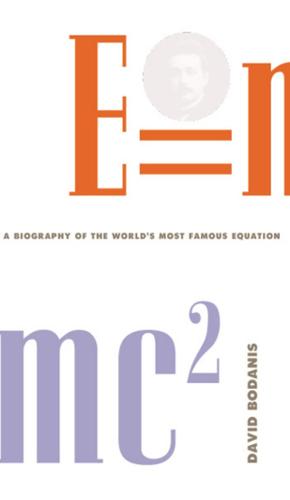
E=mc2: A Biography of the World's Most Famous Equation
by
David Bodanis
Published 25 May 2009
It’s the people outside the car who seem slow, with hotel doormen seeming to lift their arms in laborious heaviness, then puffing out their cheeks like stately deep-sea fish whenever they blow a whistle to hail a taxi. These effects are summarized in relativity by saying that when someone watches an object recede away from them, that object will be seen to undergo mass dilation, length changes, and time dilation. The bystanders will see it in the car; the driver of the car, looking back, will see it in the bystanders. The first time one reads of this, it seems like nonsense. Even Einstein found it hard to accept—as with the inexplicable tension he felt in his long talk with Michele Besso, on the summer day when he was still Einstein and the Equation trying to work out these relations.

Upgrade
by
Blake Crouch
Published 6 Jul 2022
The idea that the brain speeds up during stressful situations is a myth. When a person is afraid, their amygdala becomes more active, laying down extra memories that coincide with the normal memories of everyday life. It’s the richer, additional memories that give the illusion of time slowing down. But I suspected that, like me, Kara’s sense of time dilation was more than an illusion brought on by a fear reaction. With our sensory gating downgraded, stimuli would come flooding in during moments of intense focus. So long as our brains weren’t overwhelmed by the onslaught, this genuinely would allow us to anticipate and react at superhuman speed. “They’re not going to let what happened go,” I said.

The Year's Best Science Fiction: Twenty-Sixth Annual Collection
by
Gardner Dozois
Published 23 Jun 2009
The distortions it left in space-time advertised his position over most of a quadrant. Burn quick, burn hot and fast, get to light-speed if it meant reducing his reaction mass perilously close to the point where he would not have sufficient ever to brake. Then go dark, run silent and swift, coasting along in high time dilation where years passed in hours. Between wakings, Jedden dreamed. He dreamed down into the billions of lives, the dozens of races and civilizations that the Anpreen had encountered in their long migration. The depth of their history had stunned Jedden, as if he were swimming and, looking down, discovered beneath him not the green water of the lagoon but the clear blue drop of the continental shelf.
…
‘You know, I’m sure they’re speeding the days up. Not much, just a little every day, but definitely speeding them up. Time goes nowhere these days.’ Despite a surprisingly sophisticated matter-anti-matter propulsion system, the Aeo Taea fleet was limited to no more than ten percent of light-speed, far below the threshold where time dilation became perceptible. The crossing to the Destination—Aeo Taea was a language naturally given to Portentous Capitalizations, Fast Man had discovered—could only be made by generation ship. The Aeo Taea had contrived to do it in just one generation. The strangely slow messages the Anpreen had picked up from the fleet were no fluke of space-time distortion.
…
The drive field harmonics, the spectrum of the fusion flame, the timbre of the radar images that he so gently, kiss-soft, bounced off the pursuer’s hull, even the configuration he had glimpsed as the ship rounded the planet and launched missiles. This was the same ship that had hunted him down all the years. Deep mysteries here. Time dilation would compress his planned course to subjective minutes and Oga needed time to find an answer. The ship had known where he would go even as they bucked the stormy cape of the wandering neutron star. It had never even attempted to follow him; instead, it had always known that it must lay in a course that would whip it round to Tay.
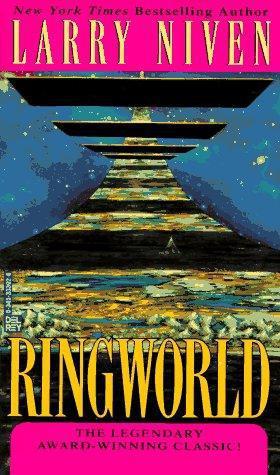
Ringworld
by
Larry Niven
Published 12 Sep 1985
“Because craft come from the home world, carrying news of technological innovations. We surmise that the Ringworlders have abandoned their home world.” “But the ships can still come in,” Louis said doggedly. “From the abandoned worlds! From centuries ago! Ramships are subject to relativity, to time dilation.” “You hope to find old spacemen trying to teach the old skills to savages who have forgotten them. And you may be right,” said Speaker. “But I weary of this structure, and the spaceport is very far. What else can I show you on the map screen?” Suddenly Louis asked, “How far have we come since we left the Liar?”
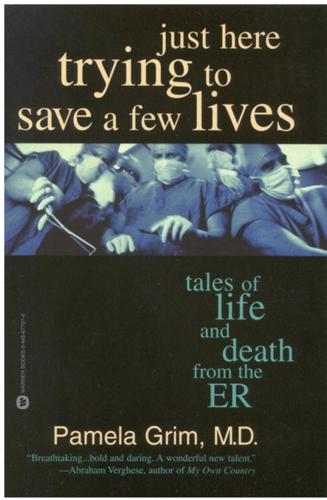
Just Here Trying to Save a Few Lives: Tales of Life and Death From the ER
by
Pamela Grim
Published 1 Jan 2000
It produces total paralysis, making it easier to intubate, that is, get the tube down into the trachea. However, if I couldn't get her intubated, she wouldn't be able to breathe on her own. I would be stuck, or rather Marilyn would be stuck. Paralyzed, without an airway, about to die. 82 percent…82 and holding. When you run a code, everyone moves as if they are running through water. Time dilates and what only takes a minute seems like hours. All that time. Alisa finally returned bearing the bottle of sux aloft. “A hundred milligrams,” I told her. The problem with sux is that it causes the stomach muscles to contract. More aspiration. There were ways to prevent this, but they all took time. 81…80.
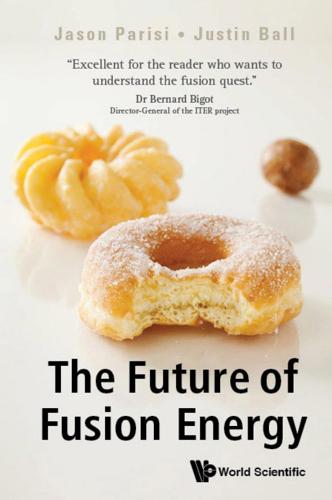
The Future of Fusion Energy
by
Jason Parisi
and
Justin Ball
Published 18 Dec 2018
Wait a second … no, that’s not right at all. 1To achieve this speed, Juno supplemented its on-board propulsion with a “gravity-assist” slingshot maneuver around the Earth. 2We’d still recommend splurging for the emergency exit row seating. The extra leg room makes all the difference. 3Five years from the Earth’s perspective — the travelers would actually experience a much shorter journey due to time dilation, a consequence of Einstein’s special theory of relativity. 4Strictly speaking, by the definition of “traveling to a star system,” there would be solar energy. However, problems could still arise if the planet we hoped to colonize turned out to have weather similar to the UK. Imagine that! Might as well turn around and start heading back to Earth. 5To learn more about space travel (and fusion’s place in it), we recommend Entering Space by Robert Zubrin. 6This equation would need to be modified if external forces were present (e.g.
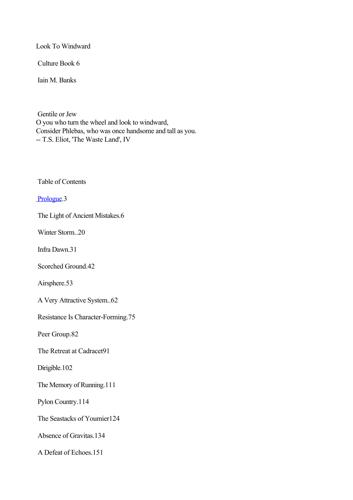
Look To Windward
by
Iain M. Banks
Published 14 Jan 2011
'Do you know there are people who've been sailing the Great River since the Orbital was completed?' 'Yes. A few are on their second circuit now. They call themselves the Time Travellers because, heading against the spin, they are moving less quickly than everybody else on the Orbital, and so incur a reduced relativistic time dilation penalty, negligible though the effect is.' Ziller nodded. The great dark eyes drank in the view. 'I wonder if anyone goes against the flow?' 'A few do. There are always some.' Kabe paused. 'None of them have yet completed a circuit of the entire Orbital; they would need to live a very long time to do so.
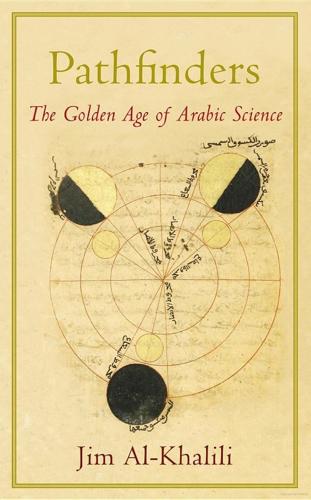
Pathfinders: The Golden Age of Arabic Science
by
Jim Al-Khalili
Published 28 Sep 2010
Nevertheless, there are undeniable tensions between science and religion in some parts of the Muslim world that must be addressed. Anti-scientific attitudes are easy to find in Muslim societies and are now flourishing on the Internet, with thousands of elaborately designed Islamic websites purporting to prove that the Qur’an predicts the Big Bang, black holes, quantum mechanics, even the notion of relativistic time dilation. When I discuss this with Muslim colleagues I always tell them of a fascinating encounter I had with two imams at a religious madrassa in Isfahan in Iran a few years ago. They both told me the same thing: that the Qur’an is not a textbook on mathematics or physics, or on medicine or astronomy.

Why We Drive: Toward a Philosophy of the Open Road
by
Matthew B. Crawford
Published 8 Jun 2020
The life you have lived up to that point is no longer livable. However great the intellectual pleasures of black holes and equations, you suddenly have before you an unexpected cosmos that is deeply animal, an expanding universe that recedes from your present abilities and calls you forward: faster. Space-time dilates, and you are working in a different frame. After seven years of riding a bike with 35 horsepower every day, I bought a modern Yamaha with about 120. It was roughly like going from an Irish donkey cart to something nuclear powered, with the precision of a Swiss watch. The acceleration was nearly hallucinogenic, the cornering scalpel-like.

Tripping on Utopia: Margaret Mead, the Cold War, and the Troubled Birth of Psychedelic Science
by
Benjamin Breen
Published 16 Jan 2024
(“A caged community of chimpanzees reacts very sensitively if a member of the tribe has received LSD,” Hoffman noted.) But Albert Hofmann and Arthur Stoll were research chemists, and they had little sense of what to actually do with the bizarre new substance. Arthur Stoll’s psychiatrist son Werner did, however. By the end of 1945, Werner Stoll was ready to see if this oddly euphoric, time-dilating, unpredictable, and incredibly potent drug had any value in psychiatry. Werner Stoll’s notes from his clinic at the University of Zurich in late 1945 record the earliest known uses of LSD in psychotherapy. They are painful to read. “Complaints that the soul has died,” Stoll scribbled in the case notes for a young woman who walked through his clinic’s doors in November 1945.

Inviting Disaster
by
James R. Chiles
Published 7 Jul 2008
As Detox One pressed forward and Cari screamed for somebody to make it stop, and as Scott Gerlicher tried to hold the machine back from his wife and daughter by his own strength, the long nightmarish sequence ended. A pillar and doorway at the corner of the NSP building had finally trapped the van. Some witnesses said the horror lasted for more than a minute, but investigators reconstructed the entire event as lasting about six seconds. The time dilation illusion is common among people under extreme stress; when I was a passenger in a car crash at age fifteen I saw pieces of glass flying through the air in distinct, slow motion. The trail of destruction, from first tire mark to the gray bashed-in front fender, covered 88.857 feet. Pushed beyond the fender were Blake McCarty’s stroller, and the one holding Denise Keenan’s children.
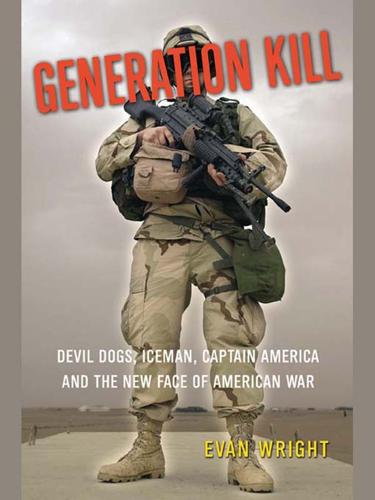
Generation Kill
by
Evan Wright
Published 19 May 2004
Several more slice through the edges of the door frames. The shooting continues on both sides. Less than half an hour before, Colbert had been talking about stress reactions in combat. In addition to the embarrassing loss of bodily control that 25 percent of all soldiers experience, other symptoms include time dilation, a sense of time slowing down or speeding up; vividness, a starkly heightened awareness of detail; random thoughts, the mind fixating on unimportant sequences; memory loss; and, of course, your basic feelings of sheer terror. In my case, hearing and sight become almost disconnected. I see more muzzle flashes next to the vehicle but don’t hear them.

The Case for Space: How the Revolution in Spaceflight Opens Up a Future of Limitless Possibility
by
Robert Zubrin
Published 30 Apr 2019
As discussed above, the effective exhaust velocity of an antimatter photon rocket would be about 50 percent the speed of light, making flights at up to 90 percent of light speed theoretically possible. This would get a ship to Alpha Centauri in about five years, which would seem like three to the crew due to the effects of relativistic time dilation. But the society that launched such a mission would have to be one that was so rich that cost was simply not an issue. LIGHT SAILS Nearly four hundred years ago, the famous German astronomer Johannes Kepler observed that regardless of whether a comet is moving toward or away from the sun, its tail always points away from the sun.

To Sleep in a Sea of Stars
by
Christopher Paolini
Published 14 Sep 2020
And while rest mass in subluminal space is real, positive, and increases due to special relativity as v approaches c; in luminal space, rest mass is zero and v always = c; and in superluminal space, rest mass is imaginary at v=c, but becomes real, positive, and decreases when moving faster than c. An implication of this is the reversal of time dilation effects with regard to acceleration. In both STL and FTL, as one approaches c, one ages slower with regard to the larger universe. That is, the universe will age far faster than a spaceship barreling along at 99% of c. However, in FTL, approaching c means slowing down. If, instead, one speeds up, traveling at ever higher multiples of c, you would age faster and faster compared to the rest of the universe.
…
Both may be used far closer to a star or planet than one can maintain a Markov Bubble, but as with the bubble, there is a point at which the associated gravity hills become too steep for all but the slowest, most energetic FTL signals to climb. Due to the protection of the bubble, a ship retains the inertial frame of reference it had prior to FTL, which means it does not experience the extreme time dilation that an exposed superluminal particle would. Nor does it experience any relativistic effects at all (the twins of the famous twin paradox will age at the same rate if one of them takes an FTL flight from Sol to Alpha Centauri and back). This, of course, leads us to the question of causality. Why, one might ask, doesn’t FTL travel allow for time travel, as all the equations for special relativity seem to indicate?
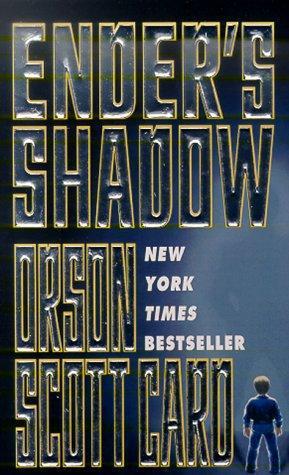
Ender's shadow
by
Orson Scott Card
Published 23 Nov 2000
In the enemy solar system, there can be no living off the land, since access to habitable planets will be possible only after complete victory... Supply lines are not a problem, since there are none to protect, but the cost of that is that all supplies and ordnance must be carried with the invading fleet... In effect, all interstellar invasion fleets are suicide attacks, because time dilation means that even if a fleet returns intact, almost no one they knew will still be alive. They can never return, and so must be sure that their force is sufficient to be decisive and therefore is worth the sacrifice.... Mixed-sex forces allow the possibility of the army becoming a permanent colony and/or occupying force on the captured enemy planet."
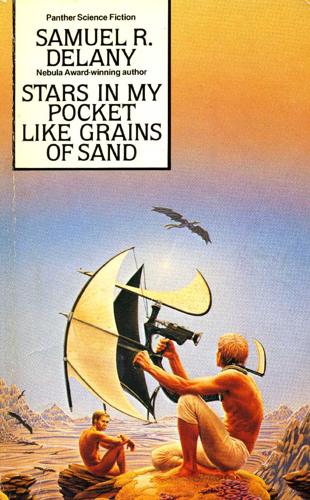
Stars in My Pocket Like Grains of Sand
by
Samuel R. Delany
Published 1 Jan 1984
In our great mittens, we climbed down through the welter of twisted pipes and cracked masonry, shooting cool air around us with super-handy-dandy portable air conditioners. It was over forty degrees in there when we went in. We sent out beams of white, blue, and green light among the collapsed lattices of crumpled supports and broken pipes. It had been seven minutes since we got the first life-reading – but we’d all been working with x5 time-dilation drugs, which had made it seem to us just over a leisurely half-hour. Yellow, orange, and red beams converged. In the resultant glow, we saw, not moving, under a scatter of rubble, a leg. ‘Ynn set loose a handful of diagnostic bugs that attacked our find like killer bees. But even as we were closing in, it was pretty clear that something fairly awful had happened.
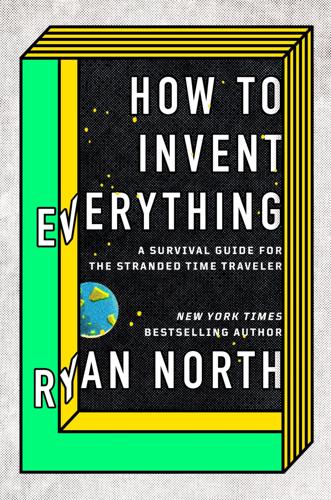
How to Invent Everything: A Survival Guide for the Stranded Time Traveler
by
Ryan North
Published 17 Sep 2018
When you get very small (quantum scales of less than 10–9m), very fast (2.99×108 m/s, close to speed of light), or very heavy (black holes), they tend to fall apart, and here Einstein’s theories of general and special relativity describe motion with more accuracy than classical Newtonian physics can. But that’s nothing you need to concern yourself about! While gravitational time dilation caused by an accelerating inertial reference frame moving through highly curved areas of space-time is a fascinating topic—and one that’s also extremely useful when constructing FC3000™ rental-market time machines—unless you happened to bring your copy of Good Grief: You Say Space and Time but Two Aspects of a Single Continuum Called Space-Time, and Furthermore That the Speed of Light in a Vacuum Is the Same for All Observers of That Light Regardless of the Motion of the Light Source?

Nine Pints: A Journey Through the Money, Medicine, and Mysteries of Blood
by
Rose George
Published 22 Oct 2018
Let’s get her into bypass. No one shouts. Everyone is politely urgent: will you, would you, would you mind. I thought she had been in the bay for at least half an hour. Perhaps even more. No, says Brohi, who was one of the fourteen staff involved in the resuscitation. She was in resus for only fifteen minutes. Time dilates in there, yet time is what they have least of. Priority: potassium, calcium, and blood. The anesthetist immediately checked the woman’s potassium levels, even though it was obvious they would be high. The dangerously leaking potassium could be addressed with insulin, and this was provided. A regular dose of insulin for a diabetic will be 10 units.
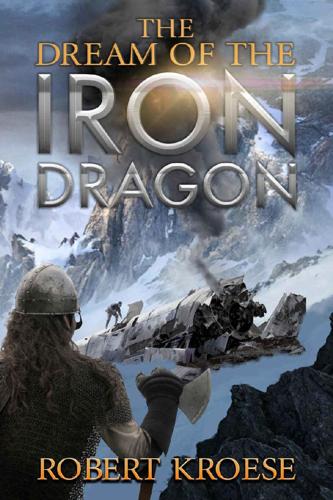
The Dream of the Iron Dragon
by
Robert Kroese
Published 6 Dec 2017
Since enlisting with the IDL after engineering school, she’d had little time to read for pleasure. Even during her downtime, she was reading manuals and white papers. The IDL’s efforts to stay technologically ahead of the Cho-ta’an were relentless. Taking into account the periods she spent in stasis, as well as the time dilation involved in interstellar travel, she fell further behind every day. As a young ship’s engineer, she always felt like she was running to stand still. Even now, sitting beside the fire, she felt a twinge of guilt. The IDL was working on a prototype for a new type of reciprocal ionic thruster that was small enough to be used for auxiliary thrusters.

Investing Amid Low Expected Returns: Making the Most When Markets Offer the Least
by
Antti Ilmanen
Published 24 Feb 2022
This Foreword is not the place for the details, but put simply, we believe that obtaining estimates of expected return that do not give undue credit for a strategy getting more expensive or undue blame for it cheapening (as rarely are either expected to occur in perpetuity going forward) is doable, yielding less biased (more accurate) and more precise (an underappreciated advantage) estimates for the future. But, none of this changes the sentiment that strategies getting very cheap or very expensive over the period studied do matter a ton in the real world over time horizons investors care about. We have often used the physics-envy term “time dilation” to refer to how long real life can seem while living it versus how short it can seem when checking out a backtest. It's easy to look at a good backtest in an intuitive robust strategy and examine its three- to five-year painful periods and think, “Of course I'd stick with it, it makes economic sense and look at the whole history!”

Schismatrix Plus
by
Bruce Sterling
Published 1 Jan 1995
I continued to fall, and as the last rags of warmth pulsed off into the devouring chasm of space, and my body grew stiff and white and furred with frost from every pore, I faced the ultimate horror: that I would not die, that I would fall forever backward into the unknown, my mind shriveling into a single frozen spore of isolation and terror. Time dilated. Eons of silent fear telescoped into a few heartbeats and I saw before me a single white blob of light, like a rent from this cosmos into some neighboring realm full of alien radiance. This time I faced it as I fell toward it, and through it, and then, finally, jarringly, I was back behind my own eyes, within my own head, on the soft floor of Kulagin’s studio.

Scale: The Universal Laws of Growth, Innovation, Sustainability, and the Pace of Life in Organisms, Cities, Economies, and Companies
by
Geoffrey West
Published 15 May 2017
See also finite-time singularity; technological singularity Singularity Is Near, The (Kurzweil), 422 Sisyphus, 418, 423, 424 “six degrees of separation,” 296–97, 301, 304–5 sleep, 6, 12 “slum clearance,” 260, 261, 263 “small world problem,” 296–97, 302–4, 305 smart cities, 270, 294, 338, 346 Smith, Adam, 380 social brain hypothesis, 308–9, 315–16 social capital, 278, 286, 372, 392 Social Darwinism, 287 social incubators, cities as, 295–304 social media, 332, 340 social metabolic rate, 13 social metabolism, 13, 373–74, 415 social networks, 344–45 cities and, 281–88, 295–304, 326–27 Dunbar and numbers, 304–9 impedance matching, 123 integrating physical infrastructure with, 315–24 social physics, 56–57 socioeconomic diversity and business activity, 363–71, 367 “socioeconomic space,” 285 socioeconomic time, 326–32 solar energy, 236, 240–42 solar system, 37, 108–9 Sornette, Didier, 415, 418, 425 Soros, George, 364 South African coast, 140, 144 space filling, 27, 112–13, 129, 201, 284 Spinoza, Baruch, 172 sports rankings, 352–53 square-cube law, 39–42, 43, 58, 59, 158–59 standardized measures, 76 Standard Model of particle physics, 338–39 standard of living, 184, 185–86, 229, 234–35 Standard & Poor’s, 385, 404 Stanford University, 265, 301, 303, 329–30, 361, 435–36 steam engines, 69 Stevenage, 263–65, 267 Stewart, Potter, 20 stock markets, 142, 144, 389–90 Stokes, George, 71 stone arch bridges, 61 strength of materials, 42–45 string theory, 85, 130, 225, 429 Strogatz, Steven, 297–98, 300–301 structuralism, 87 Strumsky, Debbie, 356, 364 Strutt, Edward, 78 Strutt & Parker, 78 sublinear scaling, 19, 28, 173, 374, 412–13 cities, 272, 273, 274–75, 288, 295, 321, 372, 374–75, 388 companies, 391–92, 408 patents, 2, 2n, 4, 29, 276, 357, 386 Sumatra earthquake of 2010, 46 supercentenarians, 188–89, 191 Superconducting Super Collider (SSC), 82–83 superexponential growth, 413–14, 414, 417 superlinear scaling, 18, 19, 29, 374 cities, 275–76, 280, 304, 318, 319, 321, 326–27, 342, 355–56, 370, 374, 391–92 companies, 408, 413–14, 414 Superman, 43–45, 44, 161 survival analysis, 402–3, 405–6 “survival of the fittest,” 87, 89, 403 survivorship curves companies, 397, 398–400, 400–402 human, 189–94, 191, 192 Swift, Jonathan, 128 Swiss Federal Institute of Technology, 271 Sydney Opera House, 259 Szell, Michael, 352 Takamatsu Corporation, 406 Taleb, Nassim, 383 Tange, Kenzo, 248, 258 Taylor Walker (London), 224–26 technological singularity, 28–32, 420, 422, 424 telescopes, 37 temperature, 20–21, 109 exponential scaling of, 173–78 extending life span and, 203–4 temperature dependence of life span, 175, 176, 177, 203–4 temperature rise, 237 terminal units, 113–14, 151, 201–2, 284 terrorist attacks, 134 Tesla, Inc., 124, 403–4 Tesla, Nikola, 123–24 Texas, flow of transport, 292–94, 293 Thames Tunnel, 64 Theory of Everything (ToE), 429–30, 444 theory of relativity, 107–8, 115, 339, 422, 428, 429 thermodynamics, 14, 69, 71, 233, 236, 237 Thiel, Peter, 184 Thomas, Warren, 52–53 Thomas Edison Company, 123–24 Thompson, D’Arcy Wentworth, 86–88, 97, 111, 181 ¾ power scaling law, 25–27, 93, 155, 458n time dilation, 332 tipping points, 16, 24, 157–58, 382, 463n total market capitalization, 379, 389–90, 390 Tottenham Hotspur, 187 “Toward a Metabolic Theory of Ecology” (Brown, Savage, Allen, Gillooly), 174 “toy model,” 109 traffic flows, 292–94 traffic gridlock, 332–33 transaction costs, 380, 381 transportation time, 332–35 travel time, 329–30, 332–35, 346–47 treadmills, 328, 412, 418 Treatise on Man (Quetelet), 56 trees, 116–17, 121, 121–22, 172, 459–60n scaling exponents, 147, 150, 150–51 trial and error, 69–71, 74–75 Triumph of the City, The (Glaeser), 213 tumors, 6, 15, 27, 172 growth curves, 170, 171 turbulence, 72 Tusko (elephant), 53 Twitter, 296, 332, 340, 447 Two New Sciences (Galileo), 38–42 Tycho Brahe, 439 Tyrannosaurus rex, 159 UCLA School of Medicine, 205 Ultimate Resource, The (Simon), 232–33 United Nations Millennium Development Goals, 230–31 unit of length, 135–37 universality concept of, 76–77 magic number four and, 93–99 “universal laws of life,” 81, 87 universal time, 423–24 University of Modena, 249 University of New Mexico (UNM), 105, 106 urbanization, 6–7, 8–10, 214–15, 223–26 global sustainability and, 28–32, 213–15 life span and, 184–85, 191, 192–93 Urbanocene, 212, 214–15, 236, 262 urban overload, 303–4 urban planning and design, 253–58, 261–67, 290, 294–95 urban psychology, 302–4 urban renewal, 260, 261, 263 urban sociology, 266 Utzon, Jørn, 259 van der Leeuw, Sander, 249–50 van Gogh, Vincent, 189 variational principle, 115–16 Vasa (ship), 70, 459n Vinge, Vernor, 422 von Neumann, John, 424 wages in cities, 30, 275, 276, 278, 281, 285–86 Walford, Roy, 205–6, 207 walking pace, 334, 335–36, 336 Wallace, Alfred Russel, 89, 228 Walmart, 32, 388–89, 394 wars, mathematical analysis of, 132–35 washing machine, 152–53 Washington, D.C., 266–67 Washington Square (New York City), 260, 261 water supply, 360–63 Watson, James, 84, 437 watts (W), 457n Watts, Duncan, 297–98, 300–301 wave theory of light, 126 wealth creation and ranking of cities, 355–59 “wear and tear,” 15, 88, 199–200 decline of body functions with age, 195, 197, 201, 202 weight lifting, 48–51, 50, 352–53 Welwyn Garden City, 255 West, Jacqueline, 187, 317 West, Louis, 52–53 whales, 3, 5, 16, 27, 80, 90–91, 92, 155, 159–60.

Superintelligence: Paths, Dangers, Strategies
by
Nick Bostrom
Published 3 Jun 2014
If your fleshly friend should happen to drop his teacup, you could watch the porcelain slowly descend toward the carpet over the course of several hours, like a comet silently gliding through space toward an assignation with a far-off planet; and, as the anticipation of the coming crash tardily propagates through the folds of your friend’s gray matter and from thence out into his peripheral nervous system, you could observe his body gradually assuming the aspect of a frozen oops—enough time for you not only to order a replacement cup but also to read a couple of scientific papers and take a nap. Because of this apparent time dilation of the material world, a speed superintelligence would prefer to work with digital objects. It could live in virtual reality and deal in the information economy. Alternatively, it could interact with the physical environment by means of nanoscale manipulators, since limbs at such small scales could operate faster than macroscopic appendages.
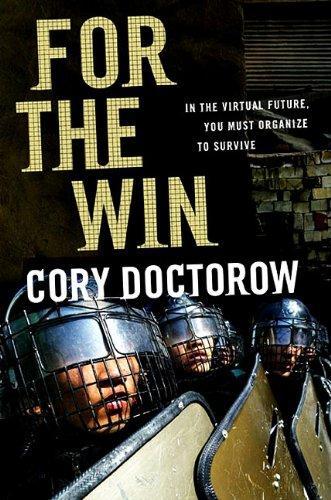
For the Win
by
Cory Doctorow
Published 11 May 2010
The gun wavered. Wavered. “Come on,” one of his buddies said. “Come on, man!” “I’ll be there in a minute,” the kid said, his voice flat. Perry knew he was a dead man. “I’m really sorry,” the kid said, once his friends were out of range. “Me too,” said Perry. “You won’t tell my brother?” Perry froze. Time dilated. He realized that his fists were clenched so tight that his knuckles hurt. He realized that he had a zit on the back of his neck that was rubbing against his collar. He realized that the kid had a paperback book stuck in the waistband of his bangbanger shorts, which was unusual. It was a fantasy novel.

The Snow Queen
by
Joan D. Vinge
Published 1 Feb 2001
But in fact they came nowhere near the Old Empire's technological sophistication, and they had learned in time that real control over several subject worlds wasn't practical without a faster than-light star drive Their dreams of domination were swallowed up in the vastness of space; until they could regain a star drive they would have to be content with economic dominance, a kind the rest of the Hegemony was willing to support. But the Prime Minister and his floating royalty continued as they had begun, a symbol of unity, although not the unity of empire. They traveled from world to world, accepting homage as virtual gods--seemingly ageless, protected by time dilation and the water of life from the precession of the universe outside. Page 107 "And they're always welcome, of course; because, ironically, they're nothing but a harmless fantasy." The voices of the debaters, and the tempers behind them, had been rising while Elsevier spoke; her sudden gasp echoed the stricken silence that suddenly fell, half a continent away, in the hall of government.
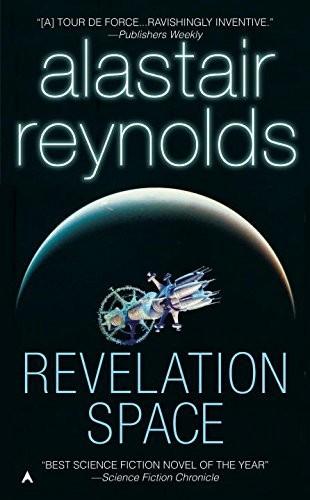
Revelation Space
by
Alastair Reynolds
Published 1 Jan 2000
'Then why——' Khouri hesitated. 'Oh, wait a minute. Now I understand. They're moving faster than us, aren't they? Much faster. Their voices sound slow because they are, literally. Clocks run slower on ships moving near the speed of light.' Volyova nodded, the tiniest bit saddened that Khouri had understood so swiftly. 'Time dilation. Of course, some of those ships are moving towards us, so doppler-blueshifting acts to reduce the effect, but the dilation factor usually wins...' She shrugged, seeing that Khouri was not yet ready for a treatise on the finer principles of relativistic communications. 'Normally, of course, Infinity corrects for all this; removes the doppler and dilatory distortions, and translates the result into something which sounds perfectly intelligible.'
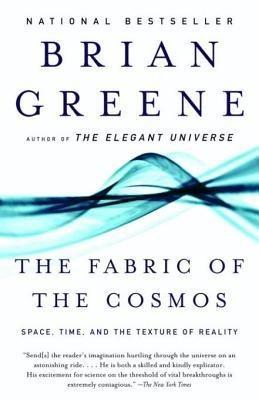
The Fabric of the Cosmos
by
Brian Greene
Published 1 Jan 2003
“Actually, it makes perfect sense,” Bart proudly answers. “I’ve landed at Springfield High, but 6 million years into the future. You can’t see me by looking out the Kwik-E-Mart window, because you’re looking at the right place, but you’re not looking at the right time. You’re looking 6 million years too early.” “Oh, right, that time-dilation thing of special relativity,” Lisa agrees. “Cool. Anyway, I want to get home in time for dinner, so climb through the wormhole, because we’ve got to hurry.” “Okay,” Bart says, crawling through the wormhole. He buys a Butterfinger from Apu, and he and Lisa head home. Notice that although Bart’s passage through the wormhole took him but a moment, it transported him 6 million years back in time.
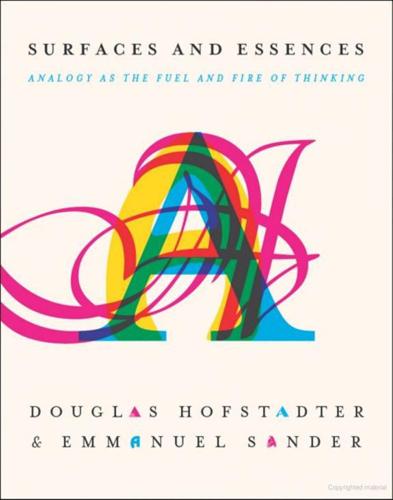
Surfaces and Essences
by
Douglas Hofstadter
and
Emmanuel Sander
Published 10 Sep 2012
A Two-headed Flashlight Loses a Tiny Bit of its Mass The consequences of category-broadening by analogy, applied to the principle of Galilean relativity, were enormously deep and led Einstein to a rich network of ideas whose names are familiar to anyone interested in science today, such as the relativity of simultaneity, time dilation, the contraction of moving objects, the non-additivity of speeds, the twin paradox, and so on. But those ideas, fascinating though they are, are not our focus. We wish now to come back, as promised, to the equation E = mc2, which, oddly enough, was nowhere to be found in Einstein’s first article on relativity.